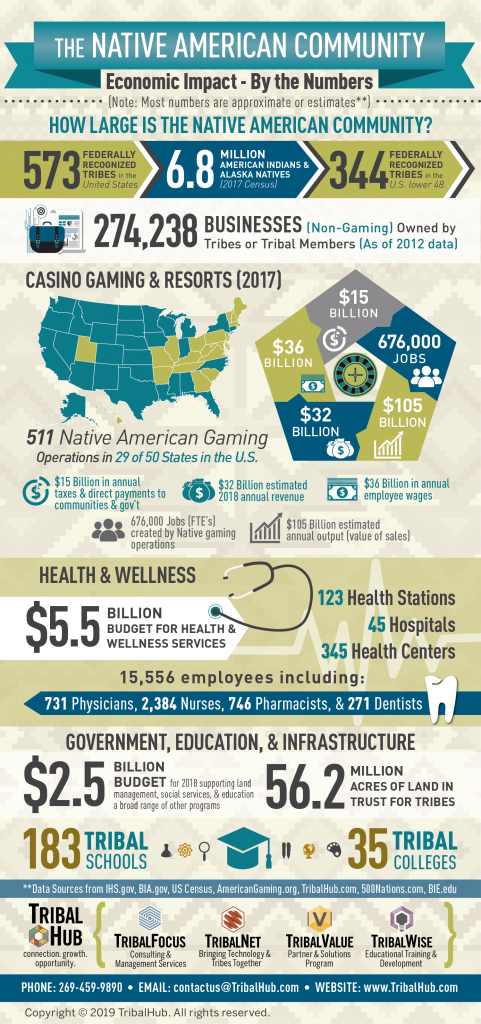Courses
TribalWise Professional Effectiveness & Leadership Essentials Collection
- MANAGEMENT and LEADERSHIP
- Achieving Success through DelegationChoosing and Preparing Your DelegateDelegating Appropriate TasksDeveloping Employees through DelegationGetting What You Expect from Your DelegateTaking Your Team to the Next Level with Delegation
- Advanced Management TechniquesBuilding Upward RelationshipsDelivering Bad News EffectivelyDeveloping Adaptable ManagersEmployee EngagementFostering Mentoring RelationshipsGauging Your Organization's High-performing PotentialManaging for Cross-functionalityManaging the Unique Needs of ExpertsManaging Top Performers Is Always Easy...Right?Managing Your Company's TalentRecognizing Natural Leaders
- Creating a Positive AtmospherePositive Atmosphere: Establishing a Positive Work EnvironmentPositive Atmosphere: Establishing an Engaged WorkforcePositive Atmosphere: How Organizational Learning Drives Positive Change
- Developing Leadership SkillsCommunicating a Shared VisionCommunicating Vision to Your EmployeesCrafting an Organizational VisionLeader as MotivatorLeading through Positive InfluenceLeveraging Emotional IntelligenceMotivating Human BehaviorMotivating Your EmployeesThe Emotionally Intelligent Leader
- Effective Succession PlanningSuccession PlanningSuccession Planning and Management Programs
- First Time Manager EssentialsActing DecisivelyEmployee DismissalFacing Challenges as a First-time ManagerMaking the Move Into ManagementManaging FairlyThe Reality of Being a First-time Manager
- Fostering Success through CoachingCoachingCoaching to Shift PerceptionsDriving Change with CoachingMeasuring and Sustaining a Coachee's PerformanceThe Art of Effective Coaching
- Improving Leadership SkillsAssessing Your Own Leadership PerformanceBecoming an Inspirational Leader
- Leading Virtual TeamsEstablishing Effective Virtual TeamsFacing Virtual Team Challenges
- Leveraging Key Management TechniquesBeing a Fair and Caring ManagerEffectively Directing and Delegating as a ManagerFacing the Management Challenges of Difficult Behavior and Diverse TeamsManaging Employee Development
- Leveraging Leadership TechniquesAligning Unit Goals and ImperativesBuilding a Leadership Development PlanBuilding Innovation Cultures and LeadersDeveloping a Business Execution CultureDo You Share Your Organization's Values?Fostering a Business Execution CultureKey Elements of Business ExecutionKnowing When to Take Leadership RisksLeading ChangeLeading InnovationLeading Teams through ChangeLeading Your Team through ChangePerformance Dashboard or Scorecard?Wanted - Innovation Leaders
- Managing a Multigenerational WorkforceDeveloping the Next GenerationMaintaining a Cohesive Multigenerational WorkforceManaging an Aging WorkforceManaging Multigenerational EmployeesUnderstanding the Motives of Millennials
- Managing Employee PerformanceAttracting and Retaining TalentCreating a Plan for Performance ManagementDetecting and Dealing with Performance ProblemsKeeping Top Performers ChallengedManaging PerformancePlanning an Effective Performance AppraisalPreparing for Your Performance AppraisalUnderperforming Employee – Now What?
- Managing in Difficult TimesBeing an Effective Manager When Times Are ToughDemonstrating Accountability in a Crisis SituationHow to Manage Difficult ConversationsManaging Motivation during Organizational ChangePerseverance and Flexibility in Times of Crisis
- Women In LeadershipCareer and Family Challenges for Women LeadersChoosing to Lead as a WomanGender and Leadership
- PROFESSIONAL EFFECTIVENESS
- 360 Degree RelationshipsBuilding Better Relationships through UnderstandingBuilding Peer RelationshipsBuilding Rapport with Your BossBuilding Your Professional NetworkCultivating Relationships with Your PeersPeer Political Styles
- Achieving Emotional IntelligenceEmotional Intelligence at WorkHow High Is Your EQ?Navigating Other People's EmotionsNavigating the Workplace with Emotional IntelligenceNavigating Your Own Emotions
- Building and Maintaining TrustRebuilding Trust
- Building, Rebuilding and Sustaining TrustRebuilding TrustThe Building Blocks of Building TrustThe Fruits of Integrity: Building Trust at Work
- Business Ethics EssentialsDeveloping Your Business EthicsEthics, Integrity, and TrustOffice Politics – What Will You Do?The Ethics Enigma
- Communicating Tactfully and DiplomaticallyActing with Diplomacy and TactNavigating Challenging Situations with Diplomacy and Tact
- Communicating with Senior ExecutivesCapturing the Attention of Senior Executives
- Creating Lasting Organizational ChangeBeyond Change: Working with AgilityCommunicating Organizational ChangeCommunicating Properly during LayoffsDeveloping PeopleFacilitating Sustainable ChangeInstituting a Quality Improvement ProgramInvolving Employees in Corporate ChangeMaking Change StickMoving Forward with Change Planning
- Creativity in the WorkplaceGetting Ready to PresentUnleashing Personal and Team CreativityVerifying and Building on Creative Ideas
- Cross-Cultural CommunicationCommunicating with a Cross-cultural AudienceDispute Resolution in International ContractsHow Culture Impacts CommunicationUsing Communication Strategies to Bridge Cultural Divides
- Dealing with Workplace ConflictConflict: Avoid, Confront, or Delay?Confrontation: What's the Best ApproachCoping with Accusations in the WorkplaceFacing and Resolving Conflict in the WorkplaceManaging ConflictMeeting the Challenge of Workplace ConflictPersonal Conflict StylesThe Many Approaches to Facing Workplace Conflict
- Developing Effective Negotiation SkillsEffective Body Language in NegotiationsNegotiating the Best SolutionTailoring Your Negotiating ApproachThe First Steps in NegotiatingVendor Negotiations: Choosing the Best Approach
- Developing Your Critical Thinking SkillsApplying Your Best ThinkingConfronting Your AssumptionsCritical ThinkingInvestigating ArgumentsReaching Sound Conclusions
- Developing Your Listening SkillsEffective ListeningListening Even When it's Difficult to ListenListening to Improve ConversationListening with SkillUsing Active Listening in Workplace Situations
- Discovering Your StrengthsEstablishing Self-confidence for LifeSelf-improvement for Lifelong SuccessUncovering and Utilizing Your Talents and Skills
- Diversity on the JobBridging the Diversity GapManaging DiversityUnderstanding Workplace DiversityYour Role in Workplace Diversity
- Doing Business ProfessionallyReframing Negative Situations
- Effective Business MeetingsMaking Meetings WorkManaging Meetings for Productivity and EffectivenessPlanning Meetings Fit for PurposeRunning Meetings in Better DirectionsWhen Too Many Meetings Are Just Too Much
- Effective Business WritingAudience and Purpose in Business WritingClarity and Conciseness in Business WritingEditing and Proofreading Business DocumentsWriting for BusinessWritten Communication
- Essential Skills for Professional Telephone CallsKeeping Business Calls Professional
- Facing Problems and Making DecisionsAddressing Stakeholder ConflictsAnticipating and Solving Problems as a Project ChampionChoosing and Using the Best SolutionControlling Project CostDecisions: Making the Right MoveDefining Alternative Solutions to a ProblemEnsuring Management Buy-in on a ProjectGetting to the Root of a ProblemManaging Conflict in Project TeamsManaging Projects with No Direct AuthorityManaging Scope on a ProjectManaging Vendor RelationshipsPlaying the Devil's Advocate in Decision MakingPortfolios, Programs, and Projects: What's the Difference?Problem Solving: Process, Tools, and TechniquesProject Management EssentialsSupporting Project ManagersTurning Problems Around with Reverse BrainstormingUncovering the Root ProblemWeighing the Costs of Project Change
- Getting Results through Personal PowerBuilding Personal Power through InfluenceInfluence and PersuasionInfluence Others with Political SavvyInfluencing Key Decision MakersPersonal Power and Credibility
- Getting Results without Direct AuthorityInfluence and Persuasion
- Improving Your MemoryImproving Your Memory Skills
- Improving Your Personal ProductivityAchieve Productivity in Your Personal LifeAvoid Procrastination by Getting Organized InsteadMaximize Your Productivity by Managing Time and TasksOrganize Your Physical and Digital Workspace
- Improving Your Reading SpeedImproving Your Reading Speed and Comprehension
- Improving Your Work/Life BalanceCreating Work/Life BalanceEmployee Exhaustion: Managing a Well-balanced WorkloadManaging Workplace StressStaying Balanced in a Shifting WorldTake a Deep Breath and Manage Your StressTaking Stock of Your Work/Life Balance
- Making the Most of Your PresentationsBuilding Your PresentationEnsuring Successful Presentation DeliveryHandling Difficult Questions as a PresenterPlanning an Effective Presentation
- Managing and Controlling AngerThe Essentials for Anger Management
- Managing Your CareerBuilding and Managing Upward RelationshipsConquering Career StagnationDeveloping a Plan to Further Your CareerDeveloping Your CareerExploring Self-developmentGetting Your Career on the Right TrackPlanning Your CareerUsing Performance Appraisals to Advance Your Career
- Navigating through Organizational ChangeDeveloping Organizational AgilityManaging the Stress of Organizational ChangeOrganizations Change So Get ReadyRedefining Yourself after Organizational ChangeThe Importance of Flexibility in the Workplace
- Optimizing Your Work/Life BalanceCreating Work/Life BalanceEmployee Exhaustion: Managing a Well-balanced Workload
- Overcoming ProcrastinationBeating Procrastination by Boosting Your Creativity and DriveProcrastination: Admitting it is the First Step
- Performing Under PressureManaging Pressure and Stress to Optimize Your Performance
- Perseverance and ResiliencePersevering through Setbacks
- Perseverance at WorkForging Ahead with Perseverance and ResiliencePerseverance: Flexibility in ActionPersevering through SetbacksReaching Goals Using Perseverance and Resilience
- Polishing Your Professional EdgeBecoming an Accountable ProfessionalBecoming More Professional through Business EtiquetteBecoming Your Own Best BossBroadening Your Learning HorizonsDeveloping a Personal Accountability FrameworkManaging GoalsReframing Negative SituationsSafe Small TalkTargeting Personal Learning
- Practical Grammar for Business WritingAbbreviating, Capitalizing, and Using NumbersCreating Well-constructed SentencesGetting the Details Right: Spelling BasicsTroublesome Words and Phrases: Common Usage Mistakes in WritingUsing Punctuation MarksUsing the Parts of Speech
- Public Speaking StrategiesConquering the Challenges of Public SpeakingWriting and Preparing an Effective Speech
- Skills for Communication SuccessAsserting Yourself in the WorkplaceBecome a Great ListenerChoosing the Right Interpersonal Communication Method to Make Your PointDo We Have a Failure to Communicate?Making an Impact with Non-verbal CommunicationMaking Yourself ApproachableThe Art and Science of CommunicationTrust Building through Effective Communication
- Storytelling BasicsFundamentals of Business Storytelling
- The Art of FeedbackCriticism in ContextGaining a Positive Perspective on FeedbackGiving Appropriate FeedbackGiving Feedback to CoworkersPolishing Your Feedback Skills
- Time ManagementAligning Goals and Priorities to Manage TimeCoping with Conflicting PrioritiesCoping with Information OverloadGetting Time under ControlMake the Time You Need: Get OrganizedPlanning for Interruptions Helps with ProcrastinationPrioritizing Personal and Professional ResponsibilitiesSetting and Managing PrioritiesSetting GoalsThe Art of Staying FocusedThe Dangers of Multitasking
- Unconscious BiasOvercoming Unconscious Bias in the WorkplaceOvercoming Your Own Unconscious BiasesUnderstanding Unconscious Bias
- Using E-mail Effectively in the WorkplaceOrganizing Your E-mailSending E-mails to the Right PeopleWriting Effective E-mails and Instant Messages
- Working with Difficult PeopleBlame Backfires--Conquer Negative ThinkingCoping with Aggressive Behavior in the WorkplaceDifficult People: Can't Change Them, so Change YourselfDifficult People: Strategies to Keep Everyone Working TogetherDifficult People: Why They Act That Way and How to Deal with ThemReacting to Co-workers Who Try Taking Advantage
- Writing a Business CaseDeveloping an Effective Business Case
- Writing Skills for Technical ProfessionalsImproving Your Technical Writing Skills
TribalWise Strategy & Leadership Collection
- BUSINESS STRATEGY and OPERATIONS
- Big Data BasicsBig Data FundamentalsBig Data Interpretation
- Essential Marketing StrategiesCompetitive Marketing Strategies: Analyzing Your OrganizationDesigning Products to Fit the ChannelDistribution and E-Marketing Ethics in the Marketing MixIncreasing Competitiveness through CollaborationProduct, Pricing, and Promotion in the Marketing MixThe Basics of MarketingThe People and Planning in MarketingTrade Show Marketing - Planning AheadUsing Web Analytics to Increase Sales
- Essentials of Public RelationsStrategies for the Modern Public Relations ProfessionalWriting Skills for Public Relations
- Fundamentals of Business PlanningCompetitive Awareness and StrategyEffective Critical Analysis of Business ReportsLeading Outside the OrganizationManagement & Leadership EssentialsPreparing and Implementing a Business PlanReturning to Core Competencies
- Leading Sustainable Process ImprovementSpearheading a Process Improvement
- Marketing in the Digital AgeHelping Customers Find YouManaging Your Corporate Reputation OnlineReaching Customers Digitally
- Mentoring AssetMentoring Six Sigma Green Belt (SSGB)Mentoring Six Sigma Yellow Belt (SSYB)
- Moving From an Operational Manager to a Strategic ThinkerCompetitive Awareness and StrategyEffective Critical Analysis of Business ReportsLeading Outside the OrganizationReturning to Core Competencies
- Operations Management: Efficiency of ProductionInventory Management: Aligning Inventory with Production and DemandOperations Management Functions and StrategiesOptimizing Operations Using Demand Forecasting and Capacity ManagementStrategic Product and Service ManagementSupply Chain Management Basics: Cutting Costs and Optimizing Delivery
- Six Sigma Black Belt (2015 BOK): AnalyzeBasics of Hypothesis Testing and Tests for Means in Six SigmaFMEA and Other Nonstatistical Analysis Methods in Six SigmaMeasuring and Modeling Relationships between Variables in Six SigmaMultivariate Tools and Nonparametric Tests in Six SigmaTests for Variances and Proportions, ANOVA, and Goodness-of-fit in Six Sigma
- Six Sigma Black Belt (2015 BOK): ControlStatistical Process Control (SPC) and Control Charts in Six SigmaSustaining Six Sigma ImprovementsUsing Lean Control Tools and Maintaining Controls in Six Sigma
- Six Sigma Black Belt (2015 BOK): DefineDetermining Requirements by Listening to the Voice of the Customer in Six SigmaSix Sigma Business Case, Project Charter, and Tools
- Six Sigma Black Belt (2015 BOK): Design for Six Sigma (DFSS)Common DFSS Methodologies, Design for X, and Robust Designs
- Six Sigma Black Belt (2015 BOK): ImproveDesigning, Conducting, and Analyzing Experiments in Six SigmaLean Improvement Methods and Implementation Planning in Six SigmaUnderstanding DOE and Planning Experiments in Six Sigma
- Six Sigma Black Belt (2015 BOK): MeasureData Types, Sampling, Collection, and Measurement in Six SigmaDetermining Process Performance and Capability in Six SigmaProbability and Probability Distributions in Six SigmaProcess Flow Metrics and Analysis Tools for Six SigmaSix Sigma Measurement Systems and MetrologyUsing Basic Statistics and Graphical Methods in Six Sigma
- Six Sigma Black Belt (2015 BOK): Organization-wide Planning and DeploymentFundamentals of Lean and Six Sigma and their ApplicationsSix Sigma Project Selection, Roles, and ResponsibilitiesSix Sigma Strategic Planning and Deployment
- Six Sigma Black Belt (2015 BOK): Organizational Process Management and MeasuresImpact on Stakeholders and Benchmarking for Six SigmaUsing Business and Financial Measures in Six Sigma
- Six Sigma Black Belt (2015 BOK): Team ManagementSix Sigma Team Dynamics and TrainingSix Sigma Team Dynamics, Roles, and Success FactorsSix Sigma Team Facilitation and Leadership
- Six Sigma Green Belt - AnalyzeSix Sigma Exploratory Data AnalysisSix Sigma Hypothesis Testing FundamentalsSix Sigma Hypothesis Tests for Variances and Proportions
- Six Sigma Green Belt - ControlSix Sigma Control ChartsSix Sigma Process Control ToolsSix Sigma Statistical Process Control Basics
- Six Sigma Green Belt - DefineIdentifying Six Sigma ProjectsManagement and Planning Tools for Six SigmaSix Sigma Performance MetricsSix Sigma Project Management EssentialsSix Sigma Voice of the CustomerTeam Dynamics and Performance for Six Sigma Projects
- Six Sigma Green Belt - ImproveSix Sigma Cycle-time Reduction and Kaizen BlitzSix Sigma Design of ExperimentsSix Sigma Root Cause Analysis and Waste Elimination
- Six Sigma Green Belt - MeasureSix Sigma Data Classification, Sampling, and CollectionSix Sigma Measurement Systems AnalysisSix Sigma Probability and Statistical DistributionsSix Sigma Process and Performance Capability MeasurementSix Sigma Process Documentation and AnalysisSix Sigma Statistics and Graphical Presentation
- Six Sigma Green Belt - Six Sigma and Organizational StrategyFMEA and Design for Six SigmaLean Principles in Six Sigma ProjectsOrganizational Goals and Six Sigma
- Six Sigma Yellow Belt - AnalyzeData Analysis and Root Cause Analysis in Six SigmaLean Tools and FMEASix Sigma Correlation, Regression, and Hypothesis Testing
- Six Sigma Yellow Belt - DefineSix Sigma: Identifying ProjectsSix Sigma: Project Management Basics
- Six Sigma Yellow Belt - Improve and ControlSix Sigma Control Tools and DocumentationSix Sigma Techniques for Improvement
- Six Sigma Yellow Belt - MeasureBasic Six Sigma StatisticsClassifying and Collecting DataSix Sigma Measurement System Analysis
- Six Sigma Yellow Belt - Six Sigma FundamentalsSix Sigma and Lean: Foundations and PrinciplesSix Sigma: MetricsSix Sigma: Quality ToolsSix Sigma: Team Basics, Roles, and Responsibilities
- Test PrepsTestPrep Six Sigma Green Belt (SSGB)TestPrep Six Sigma Yellow Belt (SSYB)
- The Foundations of Six SigmaA Critical-to-quality Tree - What’s That?Are You Listening to Your Customers?Basic Measurement Concepts in Six SigmaDoes Your Business Really Need Six Sigma?Identifying Candidates for Key Six Sigma RolesLean Inbound TransportationQuick Wins in Six Sigma ImplementationSix Sigma Versus TQM
- The Fundamentals of GlobalizationEvaluating Globalization OpportunitiesManaging Expatriates' Career DevelopmentThe Etiquette of Cross-cultural Gift Giving
- Thinking Strategically and Managing RiskAssessing Your Organization's RisksIdentifying Risks in Your OrganizationResponding Effectively to RisksThinking Strategically as a ManagerUsing Strategic Thinking to Consider the Big Picture
- Understanding Lean ProductionApplying Value Stream Mapping in Lean BusinessDo You Share Your Organization's Values?Five Steps to Perfection: Implementing LeanUsing Lean to Improve Flow and PullUsing Lean to Perfect Organizational ProcessesUsing Lean to Reduce Waste and Streamline Value FlowValue Stream Maps for Non-manufacturing Processes
- MANAGEMENT and LEADERSHIP
- Achieving Success through DelegationChoosing and Preparing Your DelegateDelegating Appropriate TasksDeveloping Employees through DelegationGetting What You Expect from Your DelegateTaking Your Team to the Next Level with Delegation
- Advanced Management TechniquesBuilding Upward RelationshipsDelivering Bad News EffectivelyDeveloping Adaptable ManagersEmployee EngagementFostering Mentoring RelationshipsGauging Your Organization's High-performing PotentialManaging for Cross-functionalityManaging the Unique Needs of ExpertsManaging Top Performers Is Always Easy...Right?Managing Your Company's TalentRecognizing Natural Leaders
- Creating a Positive AtmospherePositive Atmosphere: Establishing a Positive Work EnvironmentPositive Atmosphere: Establishing an Engaged WorkforcePositive Atmosphere: How Organizational Learning Drives Positive Change
- Developing Leadership SkillsCommunicating a Shared VisionCommunicating Vision to Your EmployeesCrafting an Organizational VisionLeader as MotivatorLeading through Positive InfluenceLeveraging Emotional IntelligenceMotivating Human BehaviorMotivating Your EmployeesThe Emotionally Intelligent Leader
- Effective Succession PlanningSuccession PlanningSuccession Planning and Management Programs
- First Time Manager EssentialsActing DecisivelyEmployee DismissalFacing Challenges as a First-time ManagerMaking the Move Into ManagementManaging FairlyThe Reality of Being a First-time Manager
- Fostering Success through CoachingCoachingCoaching to Shift PerceptionsDriving Change with CoachingMeasuring and Sustaining a Coachee's PerformanceThe Art of Effective Coaching
- Improving Leadership SkillsAssessing Your Own Leadership PerformanceBecoming an Inspirational Leader
- Leading Virtual TeamsEstablishing Effective Virtual TeamsFacing Virtual Team Challenges
- Leveraging Key Management TechniquesBeing a Fair and Caring ManagerEffectively Directing and Delegating as a ManagerFacing the Management Challenges of Difficult Behavior and Diverse TeamsManaging Employee Development
- Leveraging Leadership TechniquesAligning Unit Goals and ImperativesBuilding a Leadership Development PlanBuilding Innovation Cultures and LeadersDeveloping a Business Execution CultureDo You Share Your Organization's Values?Fostering a Business Execution CultureKey Elements of Business ExecutionKnowing When to Take Leadership RisksLeading ChangeLeading InnovationLeading Teams through ChangeLeading Your Team through ChangePerformance Dashboard or Scorecard?Wanted - Innovation Leaders
- Managing a Multigenerational WorkforceDeveloping the Next GenerationMaintaining a Cohesive Multigenerational WorkforceManaging an Aging WorkforceManaging Multigenerational EmployeesUnderstanding the Motives of Millennials
- Managing Employee PerformanceAttracting and Retaining TalentCreating a Plan for Performance ManagementDetecting and Dealing with Performance ProblemsKeeping Top Performers ChallengedManaging PerformancePlanning an Effective Performance AppraisalPreparing for Your Performance AppraisalUnderperforming Employee – Now What?
- Managing in Difficult TimesBeing an Effective Manager When Times Are ToughDemonstrating Accountability in a Crisis SituationHow to Manage Difficult ConversationsManaging Motivation during Organizational ChangePerseverance and Flexibility in Times of Crisis
- Women In LeadershipCareer and Family Challenges for Women LeadersChoosing to Lead as a WomanGender and Leadership
- PROFESSIONAL EFFECTIVENESS
- 360 Degree RelationshipsBuilding Better Relationships through UnderstandingBuilding Peer RelationshipsBuilding Rapport with Your BossBuilding Your Professional NetworkCultivating Relationships with Your PeersPeer Political Styles
- Business Ethics EssentialsDeveloping Your Business EthicsEthics, Integrity, and TrustOffice Politics – What Will You Do?The Ethics Enigma
- Creating Lasting Organizational ChangeBeyond Change: Working with AgilityCommunicating Organizational ChangeCommunicating Properly during LayoffsDeveloping PeopleFacilitating Sustainable ChangeInstituting a Quality Improvement ProgramInvolving Employees in Corporate ChangeMaking Change StickMoving Forward with Change Planning
- Developing Your Critical Thinking SkillsApplying Your Best ThinkingConfronting Your AssumptionsCritical ThinkingInvestigating ArgumentsReaching Sound Conclusions
- Diversity on the JobBridging the Diversity GapManaging DiversityUnderstanding Workplace DiversityYour Role in Workplace Diversity
- Facing Problems and Making DecisionsAddressing Stakeholder ConflictsAnticipating and Solving Problems as a Project ChampionChoosing and Using the Best SolutionControlling Project CostDecisions: Making the Right MoveDefining Alternative Solutions to a ProblemEnsuring Management Buy-in on a ProjectGetting to the Root of a ProblemManaging Conflict in Project TeamsManaging Projects with No Direct AuthorityManaging Scope on a ProjectManaging Vendor RelationshipsPlaying the Devil's Advocate in Decision MakingPortfolios, Programs, and Projects: What's the Difference?Problem Solving: Process, Tools, and TechniquesProject Management EssentialsSupporting Project ManagersTurning Problems Around with Reverse BrainstormingUncovering the Root ProblemWeighing the Costs of Project Change
- Improving Your Work/Life BalanceCreating Work/Life BalanceEmployee Exhaustion: Managing a Well-balanced WorkloadManaging Workplace StressStaying Balanced in a Shifting WorldTake a Deep Breath and Manage Your StressTaking Stock of Your Work/Life Balance
- Navigating through Organizational ChangeDeveloping Organizational AgilityManaging the Stress of Organizational ChangeOrganizations Change So Get ReadyRedefining Yourself after Organizational ChangeThe Importance of Flexibility in the Workplace
- Optimizing Your Work/Life BalanceCreating Work/Life BalanceEmployee Exhaustion: Managing a Well-balanced Workload
- Overcoming ProcrastinationBeating Procrastination by Boosting Your Creativity and DriveProcrastination: Admitting it is the First Step
- Unconscious BiasOvercoming Unconscious Bias in the WorkplaceOvercoming Your Own Unconscious BiasesUnderstanding Unconscious Bias
- PROJECT EFFECTIVENESS
- Leveraging Team Leadership SkillsBuilding and Leading TeamsBuilding the Foundation for an Effective TeamBuilding Trust IncrementallyChoosing the Right Team CultureDeveloping a Successful TeamEncouraging Team Communication and CollaborationFacilitating Work-related Conflict DiscussionsHandling Team ConflictInspiring Your TeamLeading a Cross-functional TeamManaging Communications in a Virtual TeamMediating Project Team ConflictMeeting Team Performance ChallengesSupport Your LeaderUsing Conflict to an Organization's Advantage
- Optimizing Performance on a TeamBeing an Effective Team MemberEffective Team CommunicationEstablishing Team Goals and Responsibilities, and Using Feedback EffectivelyPower and Politics in Matrixed TeamsStrategies for Building a Cohesive Team
TribalWise IT Collection
- Productivity & Collaboration Tools
- Basecamp 2Basecamp 2: Discussion & Collaboration ToolsBasecamp 2: Managing Project Tasks & AssetsBasecamp 2: Setting Up ProjectsBasecamp 2: Sign-in & SetupBasecamp 2: Tracking Projects
- Basecamp 3Basecamp 3: Managing your Project Tasks & AssetsBasecamp 3: Setting Up & Tracking ProjectsBasecamp 3: Signing In & Setting UpBasecamp 3: Using Basecamp 3 for iOSBasecamp 3: Using the Calendar ToolsBasecamp 3: Using the Team Communication Tools
- BoxBox for Web: Managing Users & Group PermissionsBox for Web: Organizing FilesBox for Web: Sharing FilesBox for Web: Signing In & Setting UpBox for Web: Using the Storage Tools
- Cisco Jabber 11.1 for WindowsCisco Jabber 11.1 for Windows: Adding & Organizing ContactsCisco Jabber 11.1 for Windows: Chat ToolsCisco Jabber 11.1 for Windows: Meeting ToolsCisco Jabber 11.1 for Windows: Setting up the Client
- Cisco Jabber 11.8 for WindowsCisco Jabber 11.8 for Windows: Adding & Organizing ContactsCisco Jabber 11.8 for Windows: Setting Up the ClientCisco Jabber 11.8 for Windows: Using the Chat & Voice ToolsCisco Jabber 11.8 for Windows: Using the Meeting Tools
- Cisco WebEx for WindowsCisco WebEx for Windows: Organizing & Hosting MeetingsCisco WebEx for Windows: Sign-in & SetupCisco WebEx for Windows: Using Meeting Tools
- ConvoConvo: Communication ToolsConvo: Configuring ConvoConvo: Creating, Finding, & Sharing InformationConvo: Sign-in & SetupConvo: The Convo iOS AppConvo: Working with Groups
- Dropbox for WebDropbox for Web: Managing Dropbox TeamsDropbox for Web: Organizing FilesDropbox for Web: Signing In & Setting UpDropbox for Web: Using the Collaboration ToolsDropbox for Web: Using the Storage Tools
- Evernote 6Evernote 6.0: Collaboration ToolsEvernote 6.0: Creating & Opening NotesEvernote 6.0: Formatting NotesEvernote 6.0: Illustrating NotesEvernote 6.0: Organizing NotesEvernote 6.0: Sign-in & SetupEvernote 6.0: Structuring & Saving Notes
- Freemind 1.0.1FreeMind 1.0.1: Building a Mind MapFreeMind 1.0.1: Creating, Saving, & Exporting DocumentsFreeMind 1.0.1: Formatting a Mind MapFreeMind 1.0.1: Using & Customizing the Interface
- Instagram for iOSInstagram for iOS: Editing & Tagging PhotosInstagram for iOS: Sharing Photos & PostsInstagram for iOS: Sign-in & Setup
- IT Security for End UsersIT Security for End Users: IT Security FundamentalsIT Security for End Users: Secure Corporate Communications and NetworkingIT Security for End Users: Using Corporate Devices Securely
- JIRA FundamentalsLeveraging the JIRA Platform for Development Projects
- Join.me for WindowsJoin.me for Windows: Organizing, Hosting & Joining MeetingsJoin.me for Windows: Signing In & Setting Up an AccountJoin.me for Windows: Using the Meeting Tools
- LinkedIn for WebLinkedIn for Web: Configuring an AccountLinkedIn for Web: Managing Contacts & ConnectionsLinkedIn for Web: Posting Updates & MessagesLinkedIn for Web: Setting Up A ProfileLinkedIn for Web: Using GroupsLinkedIn for Web: Using Networking Tools
- LogMeIn GoToMeetingLogMeIn GoToMeeting: Organizing & Hosting MeetingsLogMeIn GoToMeeting: Sign-in & Setup
- LogMeIn GoToWebinarLogMeIn GoToWebinar: Managing WebinarsLogMeIn GoToWebinar: Planning & Participating in Webinars
- Microsoft Office 2016: Advanced ExcelMicrosoft Excel 2016 Advanced: Accessibility, Transforming Data, and ErrorsMicrosoft Excel 2016 Advanced: Apps and What-if AnalysisMicrosoft Excel 2016 Advanced: Power Pivot, Custom Formatting, Fills, and Forms
- Microsoft Office 2016: Beginning AccessCreating Relationships, Queries, Forms and Reports in Access 2016Introduction to the Access 2016 Interface, Database Management, and Tables
- Microsoft Office 2016: Beginning ExcelMicrosoft Excel 2016 Essentials: Charts, Tables, and ImagesMicrosoft Excel 2016 Essentials: Creating, Editing, and Saving WorkbooksMicrosoft Excel 2016 Essentials: Data Presentation StrategiesMicrosoft Excel 2016 Essentials: Formatting DataMicrosoft Excel 2016 Essentials: Formulas and Functions
- Microsoft Office 2016: Beginning OneNoteGetting to Know Microsoft OneNote 2016Working with Microsoft OneNote 2016
- Microsoft Office 2016: Beginning OutlookConfiguring and Managing Meetings and Notes in Outlook 2016Getting to Know Outlook 2016Managing Attachments, and Inserting Items and Signatures in Outlook 2016Managing Conversations and E-mail in Outlook 2016Organizing Contacts in Outlook 2016Using the Calendar to Schedule Appointments, Events, and Tasks in Outlook 2016
- Microsoft Office 2016: Beginning PowerPointConstructing and Modifying Tables and Charts in PowerPoint 2016Formatting Text Boxes and Working with Graphic Content in PowerPoint 2016Introduction to the PowerPoint 2016 Interface and Basic TasksModifying and Formatting Slides in PowerPoint 2016Working with Graphic, Audio, and Video Content in PowerPoint 2016
- Microsoft Office 2016: Beginning ProjectGetting Started with Project 2016Managing Resources and Views in Project 2016Tracking, Managing, and Sharing Projects in Project 2016Working with Tasks, Relationships, Constraints, and Milestones in Project 2016
- Microsoft Office 2016: Beginning VisioCollaborating, Evaluating, and Saving Diagrams in Visio 2016Creating and Managing Diagrams In Visio 2016Designing and Enhancing Diagrams in Visio 2016Getting Started with Visio 2016
- Microsoft Office 2016: Beginning WordCreating and Formatting Tables in Word 2016Customizing Options and Using Document Views in Word 2016Formatting Text in Word 2016Headers, Footers, Page Numbering, and Layout in Word 2016Using the Navigation Pane and Creating Lists in Word 2016Working with the Interface and Performing Basic Tasks in Word 2016
- Microsoft Office 2016: Excel for iPadMicrosoft Excel 2016 for iPad: Formatting DataMicrosoft Excel 2016 for iPad: Inserting and Manipulating DataMicrosoft Excel 2016 for iPad: Using Collaboration ToolsMicrosoft Excel 2016 for iPad: Using Formula ToolsMicrosoft Excel 2016 for iPad: Using WorkbooksMicrosoft Excel 2016 for iPad: Visualizing Data in Tables and Charts
- Microsoft Office 2016: Excel for iPhoneMicrosoft Excel 2016 for iPhone: Inserting and Manipulating DataMicrosoft Excel 2016 for iPhone: Inserting Tables and IllustrationsMicrosoft Excel 2016 for iPhone: Using Collaboration ToolsMicrosoft Excel 2016 for iPhone: Using Workbooks
- Microsoft Office 2016: Intermediate ExcelMicrosoft Excel 2016 Intermediate: Customizing Views, Styles, and TemplatesMicrosoft Office 2016 Intermediate Excel: Creating Custom Visual EffectsMicrosoft Office 2016 Intermediate Excel: Macros and Advanced QueriesMicrosoft Office 2016 Intermediate Excel: PivotTables and Advanced ChartsMicrosoft Office 2016 Intermediate Excel: Share, Review, and CollaborateMicrosoft Office 2016 Intermediate Excel: Working with Data
- Microsoft Office 2016: Intermediate OutlookConfiguring Message Options in Outlook 2016Customizing and Managing Outlook 2016Formatting E-mail in Outlook 2016Managing Automation, Storage, and Tidying Up in Outlook 2016Managing Contacts, Tasks, and the Calendar in Outlook 2016Viewing and Configuring Outlook 2016 Backstage Options
- Microsoft Office 2016: Intermediate PowerPointCreating Photo Albums, divs, Transitions, and Animations in PowerPoint 2016Customizing Proofing and Default Options in PowerPoint 2016Exporting Presentations and Compressing Media in PowerPoint 2016Sharing and Protecting Presentations in PowerPoint 2016Using Hyperlinks, Actions, and Comments in PowerPoint 2016Using Slide Show Presentation Tools in PowerPoint 2016
- Microsoft Office 2016: Intermediate WordAdvanced Table Customization in Word 2016Designing and Formatting Illustrations in Word 2016Maintaining, Protecting, and Reviewing Documents in Word 2016References, Proofing, Mail Merges, and Forms in Word 2016Sharing and Collaborating on Documents in Word 2016Using Illustrations, Styles, and Themes in Word 2016
- Microsoft Office 2016: New FeaturesFeatures in Office 2016, PowerPoint, Excel, Visio, Project and Access, OneNoteNew and Improved Features in Office 2016, Word and Outlook
- Microsoft Office 2016: OneNote for iPadMicrosoft OneNote 2016 for iPad: Creating NotebooksMicrosoft OneNote 2016 for iPad: Creating NotesMicrosoft OneNote 2016 for iPad: Formatting NotesMicrosoft OneNote 2016 for iPad: Illustrating NotesMicrosoft OneNote 2016 for iPad: Using Collaboration Tools
- Microsoft Office 2016: PowerPoint Best PracticesDesigning Effective PowerPoint PresentationsUsing Slide Masters and Slide Elements to Optimize Impact
- Microsoft Office 2016: PowerPoint for iPadMicrosoft PowerPoint 2016 for iPad: Building PresentationsMicrosoft PowerPoint 2016 for iPad: Formatting PresentationsMicrosoft PowerPoint 2016 for iPad: Illustrating PresentationsMicrosoft PowerPoint 2016 for iPad: Preparing and Delivering Slideshows
- Microsoft Office 2016: PowerPoint for iPhoneMicrosoft PowerPoint 2016 for iPhone: Building PresentationsMicrosoft PowerPoint 2016 for iPhone: Creating & Opening PresentationsMicrosoft PowerPoint 2016 for iPhone: Formatting PresentationsMicrosoft PowerPoint 2016 for iPhone: Illustrating PresentationsMicrosoft PowerPoint 2016 for iPhone: Preparing & Delivering Slideshows
- Microsoft Office 2016: SharePoint for End UsersContent Types, Workflows, Calendar, and Office Applications in SharePoint 2016Document Sets, Alerts, Site Pages, and Web Parts in SharePoint 2016Managing Libraries and Lists in SharePoint 2016Navigating, Customizing, Lists and Libraries in SharePoint 2016Social Networking and Collaboration in SharePoint 2016Tags, Notes, Community Sites, and Search in SharePoint 2016
- Microsoft Office 2016: Sharepoint for iOSMicrosoft Sharepoint 2016 for iOS: BloggingMicrosoft Sharepoint 2016 for iOS: CollaboratingMicrosoft Sharepoint 2016 for iOS: Signing in and Navigating
- Microsoft Office 2016: Word for iPadMicrosoft Word 2016 for iPad: Adding Graphics to DocumentsMicrosoft Word 2016 for iPad: Creating, Opening, and Saving DocumentsMicrosoft Word 2016 for iPad: Editing DocumentsMicrosoft Word 2016 for iPad: Formatting DocumentsMicrosoft Word 2016 for iPad: Shaping and Structuring DocumentsMicrosoft Word 2016 for iPad: Using Collaboration Tools
- Microsoft Office 2016: Word for iPhoneMicrosoft Word 2016 for iPhone: Adding Graphics to DocumentsMicrosoft Word 2016 for iPhone: Creating, Opening & Saving DocumentsMicrosoft Word 2016 for iPhone: Editing DocumentsMicrosoft Word 2016 for iPhone: Shaping & Formatting DocumentsMicrosoft Word 2016 for iPhone: Using Collaboration Tools
- Microsoft Office OneDriveMicrosoft Office Online OneDrive: File OrganizationMicrosoft Office Online OneDrive: OneDrive for iOSMicrosoft Office Online OneDrive: Sign-in and SetupMicrosoft Office Online OneDrive: Storage Services
- MindManager 2016MindManager 2016: Adding Markers & Tags to Mind MapsMindManager 2016: Adding Tables, Charts, & Data to Mind MapsMindManager 2016: Adding Text to Mind MapsMindManager 2016: Creating, Saving & Exporting DocumentsMindManager 2016: Formatting Mind MapsMindManager 2016: Illustrating Mind MapsMindManager 2016: Presenting Mind MapsMindManager 2016: Using the Project Management ToolsMindManager 2016: Using Topics in Mind MapsMindManager 2016: Working with the Interface
- Office 2016 First LookMicrosoft Office 2016: First Look Functionality and CollaborationMicrosoft Office 2016: First Look Modern Productivity
- Outlook Mail for WebMicrosoft Outlook Mail for Web: Calendar ToolsMicrosoft Outlook Mail for Web: Configuring the AppMicrosoft Outlook Mail for Web: Contact ToolsMicrosoft Outlook Mail for Web: Formatting EmailMicrosoft Outlook Mail for Web: Getting StartedMicrosoft Outlook Mail for Web: Organizing EmailMicrosoft Outlook Mail for Web: Sending and Receiving Email
- Pinterest for iOSPinterest for iOS: Using Pinterest for iOS
- Pinterest for WebPinterest for Web: Adding & Sharing PinsPinterest for Web: Finding Pins & Sharing Boards
- Pocket for WebPocket for Web: Storing & Sharing Articles
- Prezi ClassicPrezi Classic: Building PresentationsPrezi Classic: Formatting PresentationsPrezi Classic: Preparing & Delivering SlideshowsPrezi Classic: Saving & Managing PresentationsPrezi Classic: Sign-in & Setup
- Salesforce ChatterSalesforce Chatter: Communicating with Other UsersSalesforce Chatter: Sharing InformationSalesforce Chatter: Sign-in & Profile ToolsSalesforce Chatter: Status Updates
- Salesforce Chatter for LightningSalesforce Chatter for Lightning: Sharing InformationSalesforce Chatter for Lightning: Sign-in & Profile ToolsSalesforce Chatter for Lightning: Status Updates
- Salesforce LightningSalesforce Lightning: Contact Management & CommunicationSalesforce Lightning: Keeping Track of ActivitiesSalesforce Lightning: Leads, Opportunities, & AccountsSalesforce Lightning: Managing Sales DataSalesforce Lightning: Sign-in & Setup
- Scoop.it for WebScoop.it for Web: Creating & Using ScoopsScoop.it for Web: Finding & Curating TopicsScoop.it for Web: Sign-in & Setup
- Skype for Business 2016Skype for Business 2016: Chatting and CallingSkype for Business 2016: Getting StartedSkype for Business 2016: Meeting ToolsSkype for Business 2016: Organizing and Hosting Meetings
- Skype for iOSSkype for iOS
- Skype for WebSkype for Web
- Skype for WindowsSkype for Windows: Chat ToolsSkype for Windows: Managing ContactsSkype for Windows: Sign-in and SetupSkype for Windows: Voice and Video Tools
- Slack 2016Slack 2016: Configuring SlackSlack 2016: Creating, Finding, & Sharing InformationSlack 2016: Private Messaging & Communication ToolsSlack 2016: Signing in & Setting UpSlack 2016: Using ChannelsSlack 2016: Using the iOS App
- TrelloTrello: Creating Teams & BoardsTrello: Finding & Sharing InformationTrello: Managing CardsTrello: Sign-in & Setup
- Tumblr for AndroidTumblr for Android
- Tumblr for iOSTumblr for iOS
- Tumblr for WebTumblr for Web: Blog Authoring ToolsTumblr for Web: Finding BlogsTumblr for Web: Getting Started with Blogs
- Twitter for iOSTwitter for iOS: Following UsersTwitter for iOS: Sending TweetsTwitter for iOS: Signing In & Setting Up
- Twitter for ProfessionalsTwitter for Professionals: Analyzing Audiences & User BehaviorTwitter for Professionals: Promoting a Business & Engaging with UsersTwitter for Professionals: Using Twitter Media Studio
- Twitter for WebTwitter for Web: Configuring the ServiceTwitter for Web: Finding ContentTwitter for Web: Following UsersTwitter for Web: Sending TweetsTwitter for Web: Signing In & Setting Up
- YouTube for WebYouTube for Web: Creating & Editing VideosYouTube for Web: Publishing Videos & Managing ChannelsYouTube for Web: Searching & Viewing Videos
- Basecamp 2
TribalWise Project & Program Management
- BUSINESS STRATEGY and OPERATIONS
- Leading Sustainable Process ImprovementSpearheading a Process Improvement
- Mentoring AssetMentoring Six Sigma Green Belt (SSGB)Mentoring Six Sigma Yellow Belt (SSYB)
- Operations Management: Efficiency of ProductionInventory Management: Aligning Inventory with Production and DemandOperations Management Functions and StrategiesOptimizing Operations Using Demand Forecasting and Capacity ManagementStrategic Product and Service ManagementSupply Chain Management Basics: Cutting Costs and Optimizing Delivery
- Six Sigma Black Belt (2015 BOK): AnalyzeBasics of Hypothesis Testing and Tests for Means in Six SigmaFMEA and Other Nonstatistical Analysis Methods in Six SigmaMeasuring and Modeling Relationships between Variables in Six SigmaMultivariate Tools and Nonparametric Tests in Six SigmaTests for Variances and Proportions, ANOVA, and Goodness-of-fit in Six Sigma
- Six Sigma Black Belt (2015 BOK): ControlStatistical Process Control (SPC) and Control Charts in Six SigmaSustaining Six Sigma ImprovementsUsing Lean Control Tools and Maintaining Controls in Six Sigma
- Six Sigma Black Belt (2015 BOK): DefineDetermining Requirements by Listening to the Voice of the Customer in Six SigmaSix Sigma Business Case, Project Charter, and Tools
- Six Sigma Black Belt (2015 BOK): Design for Six Sigma (DFSS)Common DFSS Methodologies, Design for X, and Robust Designs
- Six Sigma Black Belt (2015 BOK): ImproveDesigning, Conducting, and Analyzing Experiments in Six SigmaLean Improvement Methods and Implementation Planning in Six SigmaUnderstanding DOE and Planning Experiments in Six Sigma
- Six Sigma Black Belt (2015 BOK): MeasureData Types, Sampling, Collection, and Measurement in Six SigmaDetermining Process Performance and Capability in Six SigmaProbability and Probability Distributions in Six SigmaProcess Flow Metrics and Analysis Tools for Six SigmaSix Sigma Measurement Systems and MetrologyUsing Basic Statistics and Graphical Methods in Six Sigma
- Six Sigma Black Belt (2015 BOK): Organization-wide Planning and DeploymentFundamentals of Lean and Six Sigma and their ApplicationsSix Sigma Project Selection, Roles, and ResponsibilitiesSix Sigma Strategic Planning and Deployment
- Six Sigma Black Belt (2015 BOK): Organizational Process Management and MeasuresImpact on Stakeholders and Benchmarking for Six SigmaUsing Business and Financial Measures in Six Sigma
- Six Sigma Black Belt (2015 BOK): Team ManagementSix Sigma Team Dynamics and TrainingSix Sigma Team Dynamics, Roles, and Success FactorsSix Sigma Team Facilitation and Leadership
- Six Sigma Green Belt - AnalyzeSix Sigma Exploratory Data AnalysisSix Sigma Hypothesis Testing FundamentalsSix Sigma Hypothesis Tests for Variances and Proportions
- Six Sigma Green Belt - ControlSix Sigma Control ChartsSix Sigma Process Control ToolsSix Sigma Statistical Process Control Basics
- Six Sigma Green Belt - DefineIdentifying Six Sigma ProjectsManagement and Planning Tools for Six SigmaSix Sigma Performance MetricsSix Sigma Project Management EssentialsSix Sigma Voice of the CustomerTeam Dynamics and Performance for Six Sigma Projects
- Six Sigma Green Belt - ImproveSix Sigma Cycle-time Reduction and Kaizen BlitzSix Sigma Design of ExperimentsSix Sigma Root Cause Analysis and Waste Elimination
- Six Sigma Green Belt - MeasureSix Sigma Data Classification, Sampling, and CollectionSix Sigma Measurement Systems AnalysisSix Sigma Probability and Statistical DistributionsSix Sigma Process and Performance Capability MeasurementSix Sigma Process Documentation and AnalysisSix Sigma Statistics and Graphical Presentation
- Six Sigma Green Belt - Six Sigma and Organizational StrategyFMEA and Design for Six SigmaLean Principles in Six Sigma ProjectsOrganizational Goals and Six Sigma
- Six Sigma Yellow Belt - AnalyzeData Analysis and Root Cause Analysis in Six SigmaLean Tools and FMEASix Sigma Correlation, Regression, and Hypothesis Testing
- Six Sigma Yellow Belt - DefineSix Sigma: Identifying ProjectsSix Sigma: Project Management Basics
- Six Sigma Yellow Belt - Improve and ControlSix Sigma Control Tools and DocumentationSix Sigma Techniques for Improvement
- Six Sigma Yellow Belt - MeasureBasic Six Sigma StatisticsClassifying and Collecting DataSix Sigma Measurement System Analysis
- Six Sigma Yellow Belt - Six Sigma FundamentalsSix Sigma and Lean: Foundations and PrinciplesSix Sigma: MetricsSix Sigma: Quality ToolsSix Sigma: Team Basics, Roles, and Responsibilities
- Test PrepsTestPrep Six Sigma Green Belt (SSGB)TestPrep Six Sigma Yellow Belt (SSYB)
- The Foundations of Six SigmaA Critical-to-quality Tree - What’s That?Are You Listening to Your Customers?Basic Measurement Concepts in Six SigmaDoes Your Business Really Need Six Sigma?Identifying Candidates for Key Six Sigma RolesLean Inbound TransportationQuick Wins in Six Sigma ImplementationSix Sigma Versus TQM
- Understanding Lean ProductionApplying Value Stream Mapping in Lean BusinessDo You Share Your Organization's Values?Five Steps to Perfection: Implementing LeanUsing Lean to Improve Flow and PullUsing Lean to Perfect Organizational ProcessesUsing Lean to Reduce Waste and Streamline Value FlowValue Stream Maps for Non-manufacturing Processes
- PROFESSIONAL EFFECTIVENESS
- Achieving Emotional IntelligenceEmotional Intelligence at WorkHow High Is Your EQ?Navigating Other People's EmotionsNavigating the Workplace with Emotional IntelligenceNavigating Your Own Emotions
- Communicating Tactfully and DiplomaticallyActing with Diplomacy and TactNavigating Challenging Situations with Diplomacy and Tact
- Communicating with Senior ExecutivesCapturing the Attention of Senior Executives
- Cross-Cultural CommunicationCommunicating with a Cross-cultural AudienceDispute Resolution in International ContractsHow Culture Impacts CommunicationUsing Communication Strategies to Bridge Cultural Divides
- Dealing with Workplace ConflictConflict: Avoid, Confront, or Delay?Confrontation: What's the Best ApproachCoping with Accusations in the WorkplaceFacing and Resolving Conflict in the WorkplaceManaging ConflictMeeting the Challenge of Workplace ConflictPersonal Conflict StylesThe Many Approaches to Facing Workplace Conflict
- Developing Effective Negotiation SkillsEffective Body Language in NegotiationsNegotiating the Best SolutionTailoring Your Negotiating ApproachThe First Steps in NegotiatingVendor Negotiations: Choosing the Best Approach
- Developing Your Listening SkillsEffective ListeningListening Even When it's Difficult to ListenListening to Improve ConversationListening with SkillUsing Active Listening in Workplace Situations
- Effective Business MeetingsMaking Meetings WorkManaging Meetings for Productivity and EffectivenessPlanning Meetings Fit for PurposeRunning Meetings in Better DirectionsWhen Too Many Meetings Are Just Too Much
- Effective Business WritingAudience and Purpose in Business WritingClarity and Conciseness in Business WritingEditing and Proofreading Business DocumentsWriting for BusinessWritten Communication
- Essential Skills for Professional Telephone CallsKeeping Business Calls Professional
- Getting Results through Personal PowerBuilding Personal Power through InfluenceInfluence and PersuasionInfluence Others with Political SavvyInfluencing Key Decision MakersPersonal Power and Credibility
- Getting Results without Direct AuthorityInfluence and PersuasionInfluencing Key Decision Makers
- Making the Most of Your PresentationsBuilding Your PresentationEnsuring Successful Presentation DeliveryHandling Difficult Questions as a PresenterPlanning an Effective Presentation
- Managing and Controlling AngerThe Essentials for Anger Management
- Practical Grammar for Business WritingAbbreviating, Capitalizing, and Using NumbersCreating Well-constructed SentencesGetting the Details Right: Spelling BasicsTroublesome Words and Phrases: Common Usage Mistakes in WritingUsing Punctuation MarksUsing the Parts of Speech
- Skills for Communication SuccessAsserting Yourself in the WorkplaceBecome a Great ListenerChoosing the Right Interpersonal Communication Method to Make Your PointDo We Have a Failure to Communicate?Making an Impact with Non-verbal CommunicationMaking Yourself ApproachableThe Art and Science of CommunicationTrust Building through Effective Communication
- Storytelling BasicsFundamentals of Business Storytelling
- The Art of FeedbackCriticism in ContextGaining a Positive Perspective on FeedbackGiving Appropriate FeedbackGiving Feedback to CoworkersPolishing Your Feedback Skills
- Using E-mail Effectively in the WorkplaceOrganizing Your E-mailSending E-mails to the Right PeopleWriting Effective E-mails and Instant Messages
- Working with Difficult PeopleBlame Backfires--Conquer Negative ThinkingCoping with Aggressive Behavior in the WorkplaceDifficult People: Can't Change Them, so Change YourselfDifficult People: Strategies to Keep Everyone Working TogetherDifficult People: Why They Act That Way and How to Deal with ThemReacting to Co-workers Who Try Taking Advantage
- Writing a Business CaseDeveloping an Effective Business Case
- Writing Skills for Technical ProfessionalsImproving Your Technical Writing Skills
- PROJECT EFFECTIVENESS
- Communications (PMBOK® Guide Sixth Edition)Monitor Project Communications (PMBOK® Guide Sixth Edition)Plan and Manage Communications (PMBOK® Guide Sixth Edition)
- CompTIA Project+ PK0-004Communication, Changes, and DocumentationControlling Project Work and ClosingPlanning and Controlling the Project ScheduleProject Documents and TerminologyProject Management Practical ExercisesProject Planning DocumentsProject Selection and InitiationQuality and Procurement PlanningResource and Risk PlanningScope, Schedule and Cost Planning
- Effective Business Analysis Techniques (BABOK®v3)Business Analysis Activities and ToolsBusiness Analysis Analytical TechniquesBusiness Analysis Documentation and Criteria
- Key Business Analysis Competencies (BABOK®v3)Business Analysis Professional Effectiveness CompetenciesPersonal Skills for Effective Business AnalysisPerspectives for Effective Business Analysis
- Key Business Analysis Concepts (BABOK® v3)Business Analysis OverviewCertified Business Analysis ProfessionalRADD Knowledge Area: Part 1RADD Knowledge Area: Part 2The BA Elicitation and Collaboration Knowledge AreaThe BA Planning and Monitoring Knowledge AreaThe Requirements Life Cycle Management Knowledge AreaThe Solution Evaluation Knowledge AreaThe Strategy Analysis Knowledge Area
- Leveraging Team Leadership SkillsBuilding and Leading TeamsBuilding the Foundation for an Effective TeamBuilding Trust IncrementallyChoosing the Right Team CultureDeveloping a Successful TeamEncouraging Team Communication and CollaborationFacilitating Work-related Conflict DiscussionsHandling Team ConflictInspiring Your TeamLeading a Cross-functional TeamManaging Communications in a Virtual TeamMediating Project Team ConflictMeeting Team Performance ChallengesSupport Your LeaderUsing Conflict to an Organization's Advantage
- Mentoring AssetsMentoring Certified Associate in Project Management (CAPM) PMBOK Guide 5th Ed.Mentoring Certified Associate in Project Management (CAPM) PMBOK Guide 6th Ed.Mentoring PK0-004 CompTIA Project+Mentoring PRINCE2 Foundation 2017Mentoring Project Management Professional (PMP) PMBOK Guide 6th Edition Aligned
- Optimizing Performance on a TeamBeing an Effective Team MemberEffective Team CommunicationEstablishing Team Goals and Responsibilities, and Using Feedback EffectivelyPower and Politics in Matrixed TeamsStrategies for Building a Cohesive Team
- PMI Agile Certified Practitioner (PMI-ACP)®Agile Key Exam ConceptsAgile Principles and MethodologiesAgile Project PlanningAgile Project Scheduling and MonitoringAgile Stakeholder Engagement and Team Development
- PRINCE2® - Foundation (2017 Update)Adopting PRINCE2® for your Project Environment (2017 Update)PRINCE2® Control, Manage, and Close Projects (2017 Update)PRINCE2® Project Management Overview (2017 Update)PRINCE2® Project Planning and Risk Management (2017 Update)PRINCE2® Project Quality and Control (2017 Update)PRINCE2® Start, Direct, and Initiate Projects (2017 Update)
- Project Cost (PMBOK® Guide Sixth Edition)Creating a Project Budget (PMBOK® Guide Sixth Edition)Keeping Your Project on Budget (PMBOK® Guide Sixth Edition)
- Project Integration (PMBOK® Guide Sixth Edition)Capturing, Analyzing, and Using Project Lessons LearnedManaging Project Work (PMBOK® Guide Sixth Edition)Project Changes and Closing (PMBOK® Guide Sixth Edition)Project Initiation and Planning (PMBOK® Guide Sixth Edition)Strategically Focused Project Management
- Project Management (PMBOK® Guide Sixth Edition)Project Fundamentals (PMBOK® Guide Sixth Edition)Project Management Introduction (PMBOK® Sixth Edition)The Process Groups (PMBOK® Guide Sixth Edition)
- Project Management Ethics and ValuesEthical Standards and PMI® Core ValuesEthics and Project Management
- Project Management for AllFinding Your Bearings as a Project ManagerGetting the Big Picture by Defining the Project's Scope and TeamManaging a Project to Minimize Risk and Maximize QualityMastering the Details of a Project's Schedule and BudgetNavigating through Changes and Conflicts in ProjectsTaking Final Steps to Bring a Project to its Close
- Project Procurement (PMBOK® Guide Sixth Edition)Procurement Management (PMBOK® Guide Sixth Edition)Procurement Planning (PMBOK® Guide Sixth Edition)
- Project Quality (PMBOK® Guide Sixth Edition)Manage and Control Quality (PMBOK® Guide Sixth Edition)Planning Quality Management (PMBOK® Guide Sixth Edition)Quality Methodologies and Standards for Project Management
- Project Risk (PMBOK® Guide Sixth Edition)Analyzing Risk (PMBOK® Guide Sixth Edition)Identifying Risk (PMBOK® Guide Sixth Edition)Planning Risk Management (PMBOK® Guide Sixth Edition)Responding to Risk (PMBOK® Guide Sixth Edition)
- Project Schedule (PMBOK® Guide Sixth Edition)Control the Project Schedule (PMBOK® Guide Sixth Edition)Define and Sequence Activities (PMBOK® Guide Sixth Edition)Develop the Project Schedule (PMBOK® Guide Sixth Edition)
- Project Scope (PMBOK® Guide Sixth Edition)Create Work Breakdown Structure (PMBOK® Guide Sixth Edition)Plan and Define Project Scope (PMBOK® Guide Sixth Edition)Validate and Control Scope (PMBOK® Guide Sixth Edition)
- Project Stakeholders (PMBOK® Guide Sixth Edition)Managing Stakeholder Engagement (PMBOK® Guide Sixth Edition)Planning Stakeholder Engagement (PMBOK® Guide Sixth Edition)
- Resource Management (PMBOK® Guide Sixth Edition)Develop and Manage Resources (PMBOK® Guide Sixth Edition)Plan and Acquire Resources (PMBOK® Guide Sixth Edition)
- Test PrepsTestPrep Certified Associate in Project Management (CAPM) PMBOK Guide 5th Ed.TestPrep Project Management Professional PMBOK 6th Ed
TribalWise Customer Service Excellence
- PROFESSIONAL EFFECTIVENESS
- 360 Degree RelationshipsBuilding Better Relationships through UnderstandingBuilding Peer RelationshipsBuilding Rapport with Your BossBuilding Your Professional NetworkCultivating Relationships with Your PeersPeer Political Styles
- Achieving Emotional IntelligenceEmotional Intelligence at WorkHow High Is Your EQ?Navigating Other People's EmotionsNavigating the Workplace with Emotional IntelligenceNavigating Your Own Emotions
- Building and Maintaining TrustRebuilding Trust
- Building, Rebuilding and Sustaining TrustRebuilding TrustThe Building Blocks of Building TrustThe Fruits of Integrity: Building Trust at Work
- Business Ethics EssentialsDeveloping Your Business EthicsEthics, Integrity, and TrustOffice Politics – What Will You Do?The Ethics Enigma
- Communicating Tactfully and DiplomaticallyActing with Diplomacy and TactNavigating Challenging Situations with Diplomacy and Tact
- Communicating with Senior ExecutivesCapturing the Attention of Senior Executives
- Creating Lasting Organizational ChangeBeyond Change: Working with AgilityCommunicating Organizational ChangeCommunicating Properly during LayoffsDeveloping PeopleFacilitating Sustainable ChangeInstituting a Quality Improvement ProgramInvolving Employees in Corporate ChangeMaking Change StickMoving Forward with Change Planning
- Creativity in the WorkplaceGetting Ready to PresentUnleashing Personal and Team CreativityVerifying and Building on Creative Ideas
- Cross-Cultural CommunicationCommunicating with a Cross-cultural AudienceDispute Resolution in International ContractsHow Culture Impacts CommunicationUsing Communication Strategies to Bridge Cultural Divides
- Dealing with Workplace ConflictConflict: Avoid, Confront, or Delay?Confrontation: What's the Best ApproachCoping with Accusations in the WorkplaceFacing and Resolving Conflict in the WorkplaceManaging ConflictMeeting the Challenge of Workplace ConflictPersonal Conflict StylesThe Many Approaches to Facing Workplace Conflict
- Developing Effective Negotiation SkillsEffective Body Language in NegotiationsNegotiating the Best SolutionTailoring Your Negotiating ApproachThe First Steps in NegotiatingVendor Negotiations: Choosing the Best Approach
- Developing Your Critical Thinking SkillsApplying Your Best ThinkingConfronting Your AssumptionsCritical ThinkingInvestigating ArgumentsReaching Sound Conclusions
- Developing Your Listening SkillsEffective ListeningListening Even When it's Difficult to ListenListening to Improve ConversationListening with SkillUsing Active Listening in Workplace Situations
- Discovering Your StrengthsEstablishing Self-confidence for LifeSelf-improvement for Lifelong SuccessUncovering and Utilizing Your Talents and Skills
- Diversity on the JobBridging the Diversity GapManaging DiversityUnderstanding Workplace DiversityYour Role in Workplace Diversity
- Doing Business ProfessionallyReframing Negative Situations
- Effective Business MeetingsMaking Meetings WorkManaging Meetings for Productivity and EffectivenessPlanning Meetings Fit for PurposeRunning Meetings in Better DirectionsWhen Too Many Meetings Are Just Too Much
- Effective Business WritingAudience and Purpose in Business WritingClarity and Conciseness in Business WritingEditing and Proofreading Business DocumentsWriting for BusinessWritten Communication
- Essential Skills for Professional Telephone CallsKeeping Business Calls Professional
- Facing Problems and Making DecisionsAddressing Stakeholder ConflictsAnticipating and Solving Problems as a Project ChampionChoosing and Using the Best SolutionControlling Project CostDecisions: Making the Right MoveDefining Alternative Solutions to a ProblemEnsuring Management Buy-in on a ProjectGetting to the Root of a ProblemManaging Conflict in Project TeamsManaging Projects with No Direct AuthorityManaging Scope on a ProjectManaging Vendor RelationshipsPlaying the Devil's Advocate in Decision MakingPortfolios, Programs, and Projects: What's the Difference?Problem Solving: Process, Tools, and TechniquesProject Management EssentialsSupporting Project ManagersTurning Problems Around with Reverse BrainstormingUncovering the Root ProblemWeighing the Costs of Project Change
- Getting Results through Personal PowerBuilding Personal Power through InfluenceInfluence and PersuasionInfluence Others with Political SavvyInfluencing Key Decision MakersPersonal Power and Credibility
- Getting Results without Direct AuthorityInfluence and PersuasionInfluencing Key Decision Makers
- Improving Your MemoryImproving Your Memory Skills
- Improving Your Personal ProductivityAchieve Productivity in Your Personal LifeAvoid Procrastination by Getting Organized InsteadMaximize Your Productivity by Managing Time and TasksOrganize Your Physical and Digital Workspace
- Improving Your Reading SpeedImproving Your Reading Speed and Comprehension
- Improving Your Work/Life BalanceCreating Work/Life BalanceEmployee Exhaustion: Managing a Well-balanced WorkloadManaging Workplace StressStaying Balanced in a Shifting WorldTake a Deep Breath and Manage Your StressTaking Stock of Your Work/Life Balance
- Making the Most of Your PresentationsBuilding Your PresentationEnsuring Successful Presentation DeliveryHandling Difficult Questions as a PresenterPlanning an Effective Presentation
- Managing and Controlling AngerThe Essentials for Anger Management
- Navigating through Organizational ChangeDeveloping Organizational AgilityManaging the Stress of Organizational ChangeOrganizations Change So Get ReadyRedefining Yourself after Organizational ChangeThe Importance of Flexibility in the Workplace
- Optimizing Your Work/Life BalanceCreating Work/Life BalanceEmployee Exhaustion: Managing a Well-balanced Workload
- Overcoming ProcrastinationBeating Procrastination by Boosting Your Creativity and DriveProcrastination: Admitting it is the First Step
- Performing Under PressureManaging Pressure and Stress to Optimize Your Performance
- Perseverance and ResiliencePersevering through Setbacks
- Perseverance at WorkForging Ahead with Perseverance and ResiliencePerseverance: Flexibility in ActionPersevering through SetbacksReaching Goals Using Perseverance and Resilience
- Polishing Your Professional EdgeBecoming an Accountable ProfessionalBecoming More Professional through Business EtiquetteBecoming Your Own Best BossBroadening Your Learning HorizonsDeveloping a Personal Accountability FrameworkManaging GoalsReframing Negative SituationsSafe Small TalkTargeting Personal Learning
- Practical Grammar for Business WritingAbbreviating, Capitalizing, and Using NumbersCreating Well-constructed SentencesGetting the Details Right: Spelling BasicsTroublesome Words and Phrases: Common Usage Mistakes in WritingUsing Punctuation MarksUsing the Parts of Speech
- Public Speaking StrategiesConquering the Challenges of Public SpeakingWriting and Preparing an Effective Speech
- Skills for Communication SuccessAsserting Yourself in the WorkplaceBecome a Great ListenerChoosing the Right Interpersonal Communication Method to Make Your PointDo We Have a Failure to Communicate?Making an Impact with Non-verbal CommunicationMaking Yourself ApproachableThe Art and Science of CommunicationTrust Building through Effective Communication
- Storytelling BasicsFundamentals of Business Storytelling
- The Art of FeedbackCriticism in ContextGaining a Positive Perspective on FeedbackGiving Appropriate FeedbackGiving Feedback to CoworkersPolishing Your Feedback Skills
- Time ManagementAligning Goals and Priorities to Manage TimeCoping with Conflicting PrioritiesCoping with Information OverloadGetting Time under ControlMake the Time You Need: Get OrganizedPlanning for Interruptions Helps with ProcrastinationPrioritizing Personal and Professional ResponsibilitiesSetting and Managing PrioritiesSetting GoalsThe Art of Staying FocusedThe Dangers of Multitasking
- Unconscious BiasOvercoming Unconscious Bias in the WorkplaceOvercoming Your Own Unconscious BiasesUnderstanding Unconscious Bias
- Using E-mail Effectively in the WorkplaceOrganizing Your E-mailSending E-mails to the Right PeopleWriting Effective E-mails and Instant Messages
- Working with Difficult PeopleBlame Backfires--Conquer Negative ThinkingCoping with Aggressive Behavior in the WorkplaceDifficult People: Can't Change Them, so Change YourselfDifficult People: Strategies to Keep Everyone Working TogetherDifficult People: Why They Act That Way and How to Deal with ThemReacting to Co-workers Who Try Taking Advantage
- Writing a Business CaseDeveloping an Effective Business Case
- Writing Skills for Technical ProfessionalsImproving Your Technical Writing Skills
- SALES and CUSTOMER FACING SKILLS
- Customer Service SkillsCommunicating Effectively with CustomersControlling Conflict, Stress, and Time in a Customer Service EnvironmentCreating a Customer-focused OrganizationDealing with Customer Service Incidents and ComplaintsDeveloping Your Customer FocusInteracting with CustomersListening to Your CustomersPolishing Your Skills for Excellent Customer Service
- Essentials of Customer ServiceAligning Performance to Key IndicatorsDesigning a Customer Service StrategyFacing Confrontation in Customer ServiceProviding Effective Internal Customer ServiceProviding On-site Customer ServiceProviding Telephone Customer ServiceRapport Building in Customer ServiceThe Angry Caller: What's Your Plan?
- Frontline Call Center SkillsAligning Agent Behaviors with Caller TypesCreating an Effective On-hold MessageThe Importance of Call Tracking and Ticketing
- Inbound Call Center ManagementConverting a Call Center to a Profit CenterCustomer Service Training - The Interview and BeyondDisaster Recovery - Keeping the Lines OpenManaging Your Call Center More EfficientlyPreventing Agent Absenteeism through Better Working ConditionsPrioritizing Rewards and Recognition in Call Centers
- Industry OverviewsThe Aerospace & Defense Industry Overview: Version 2The Agriculture Industry Overview: Version 4The Automotive Industry Overview: Version 4The Banking Industry Overview: Version 4The Biotechnology Industry Overview: Version 2The Broadcasting & Entertainment Industry Overview: Version 2The Capital Markets Industry Overview: Version 2The Chemicals Industry Overview: Version 2The Consumer Electronics Industry Overview: Version 2The Education Industry Overview: Version 2The Federal Government Industry Overview: Version 4The Food and Beverage Industry Overview: Version 4The Health Care Industry Overview: Version 4The Information Technology Industry Overview: Version 4The Insurance Industry Overview: Version 4The Manufacturing Industry Overview: Version 4The Oil and Gas Industry Overview: Version 4The Pharmaceutical Industry Overview: Version 5The Retail Industry Overview: Version 4The Telecommunications Industry Overview: Version 4The Utilities Industry Overview: Version 2
- ITIL® 2011 Edition Intermediate Level: Operational Support & Analysis (OSA)ITIL ® Operational Support & AnalysisITIL® 2011 Edition OSA: Function ActivitiesITIL® 2011 Edition OSA: Incident Management InteractionsITIL® 2011 Edition OSA: Introduction to Access ManagementITIL® 2011 Edition OSA: Introduction to Event ManagementITIL® 2011 Edition OSA: Introduction to FunctionsITIL® 2011 Edition OSA: Introduction to Incident ManagementITIL® 2011 Edition OSA: Introduction to Operational Support and AnalysisITIL® 2011 Edition OSA: Introduction to Problem ManagementITIL® 2011 Edition OSA: Introduction to Request FulfillmentITIL® 2011 Edition OSA: Introduction to the Service DeskITIL® 2011 Edition OSA: Problem Management Process Interfaces and ChallengesITIL® 2011 Edition OSA: Request Fulfillment Process Interfaces and ChallengesITIL® 2011 Edition OSA: Service Desk Metrics and OutsourcingITIL® 2011 Edition OSA: Technology and Implementation Considerations
- ITIL® 2011 FoundationITIL® Continual Service ImprovementITIL® Service Design ConceptsITIL® Service Design ProcessesITIL® Service Operation ConceptsITIL® Service Operation ProcessesITIL® Service Strategy ConceptsITIL® Service Strategy ProcessesITIL® Service Transition Concepts and ProcessesOverview of the ITIL® Service Lifecycle
- Mentoring AssetsMentoring ITIL Foundation
- Sales FoundationsEducating and Collaborating with Customers
- Solution SellingConnecting Customers and SolutionsManaging Implementation ProblemsPreparing to Implement SolutionsTurning Potential Customers into Allies
- Strategic Account Sales SkillsBuilding Profitable Customer RelationshipsConnecting the Dots: Insightful Account ManagementCrafting Sales StrategiesPerformance Payout PlansPlanning for Effective SellingSales and Marketing: Two Sides of the Same Coin?Selling to Key PlayersSucceeding in Account Management
- Test PrepsTestPrep ITIL Foundation
TribalWise HR, Finance, Payroll, Admin
- BUSINESS STRATEGY and OPERATIONS
- Leading Sustainable Process ImprovementSpearheading a Process Improvement
- Mentoring AssetMentoring Six Sigma Green Belt (SSGB)Mentoring Six Sigma Yellow Belt (SSYB)
- Operations Management: Efficiency of ProductionInventory Management: Aligning Inventory with Production and DemandOperations Management Functions and StrategiesOptimizing Operations Using Demand Forecasting and Capacity ManagementStrategic Product and Service ManagementSupply Chain Management Basics: Cutting Costs and Optimizing Delivery
- Six Sigma Black Belt (2015 BOK): AnalyzeBasics of Hypothesis Testing and Tests for Means in Six SigmaFMEA and Other Nonstatistical Analysis Methods in Six SigmaMeasuring and Modeling Relationships between Variables in Six SigmaMultivariate Tools and Nonparametric Tests in Six SigmaTests for Variances and Proportions, ANOVA, and Goodness-of-fit in Six Sigma
- Six Sigma Black Belt (2015 BOK): ControlStatistical Process Control (SPC) and Control Charts in Six SigmaSustaining Six Sigma ImprovementsUsing Lean Control Tools and Maintaining Controls in Six Sigma
- Six Sigma Black Belt (2015 BOK): DefineDetermining Requirements by Listening to the Voice of the Customer in Six SigmaSix Sigma Business Case, Project Charter, and Tools
- Six Sigma Black Belt (2015 BOK): Design for Six Sigma (DFSS)Common DFSS Methodologies, Design for X, and Robust Designs
- Six Sigma Black Belt (2015 BOK): ImproveDesigning, Conducting, and Analyzing Experiments in Six SigmaLean Improvement Methods and Implementation Planning in Six SigmaUnderstanding DOE and Planning Experiments in Six Sigma
- Six Sigma Black Belt (2015 BOK): MeasureData Types, Sampling, Collection, and Measurement in Six SigmaDetermining Process Performance and Capability in Six SigmaProbability and Probability Distributions in Six SigmaProcess Flow Metrics and Analysis Tools for Six SigmaSix Sigma Measurement Systems and MetrologyUsing Basic Statistics and Graphical Methods in Six Sigma
- Six Sigma Black Belt (2015 BOK): Organization-wide Planning and DeploymentFundamentals of Lean and Six Sigma and their ApplicationsSix Sigma Project Selection, Roles, and ResponsibilitiesSix Sigma Strategic Planning and Deployment
- Six Sigma Black Belt (2015 BOK): Organizational Process Management and MeasuresImpact on Stakeholders and Benchmarking for Six SigmaUsing Business and Financial Measures in Six Sigma
- Six Sigma Black Belt (2015 BOK): Team ManagementSix Sigma Team Dynamics and TrainingSix Sigma Team Dynamics, Roles, and Success FactorsSix Sigma Team Facilitation and Leadership
- Six Sigma Green Belt - AnalyzeSix Sigma Exploratory Data AnalysisSix Sigma Hypothesis Testing FundamentalsSix Sigma Hypothesis Tests for Variances and Proportions
- Six Sigma Green Belt - ControlSix Sigma Control ChartsSix Sigma Process Control ToolsSix Sigma Statistical Process Control Basics
- Six Sigma Green Belt - DefineIdentifying Six Sigma ProjectsManagement and Planning Tools for Six SigmaSix Sigma Performance MetricsSix Sigma Project Management EssentialsSix Sigma Voice of the CustomerTeam Dynamics and Performance for Six Sigma Projects
- Six Sigma Green Belt - ImproveSix Sigma Cycle-time Reduction and Kaizen BlitzSix Sigma Design of ExperimentsSix Sigma Root Cause Analysis and Waste Elimination
- Six Sigma Green Belt - MeasureSix Sigma Data Classification, Sampling, and CollectionSix Sigma Measurement Systems AnalysisSix Sigma Probability and Statistical DistributionsSix Sigma Process and Performance Capability MeasurementSix Sigma Process Documentation and AnalysisSix Sigma Statistics and Graphical Presentation
- Six Sigma Green Belt - Six Sigma and Organizational StrategyFMEA and Design for Six SigmaLean Principles in Six Sigma ProjectsOrganizational Goals and Six Sigma
- Six Sigma Yellow Belt - AnalyzeData Analysis and Root Cause Analysis in Six SigmaLean Tools and FMEASix Sigma Correlation, Regression, and Hypothesis Testing
- Six Sigma Yellow Belt - DefineSix Sigma: Identifying ProjectsSix Sigma: Project Management Basics
- Six Sigma Yellow Belt - Improve and ControlSix Sigma Control Tools and DocumentationSix Sigma Techniques for Improvement
- Six Sigma Yellow Belt - MeasureBasic Six Sigma StatisticsClassifying and Collecting DataSix Sigma Measurement System Analysis
- Six Sigma Yellow Belt - Six Sigma FundamentalsSix Sigma and Lean: Foundations and PrinciplesSix Sigma: MetricsSix Sigma: Quality ToolsSix Sigma: Team Basics, Roles, and Responsibilities
- Test PrepsTestPrep Six Sigma Green Belt (SSGB)TestPrep Six Sigma Yellow Belt (SSYB)
- The Foundations of Six SigmaA Critical-to-quality Tree - What’s That?Are You Listening to Your Customers?Basic Measurement Concepts in Six SigmaDoes Your Business Really Need Six Sigma?Identifying Candidates for Key Six Sigma RolesLean Inbound TransportationQuick Wins in Six Sigma ImplementationSix Sigma Versus TQM
- Understanding Lean ProductionApplying Value Stream Mapping in Lean BusinessDo You Share Your Organization's Values?Five Steps to Perfection: Implementing LeanUsing Lean to Improve Flow and PullUsing Lean to Perfect Organizational ProcessesUsing Lean to Reduce Waste and Streamline Value FlowValue Stream Maps for Non-manufacturing Processes
- FINANCE, HUMAN RESOURCES and ADMINISTRATION
- Accounting BasicsAccounting for Stock TransactionsDeconstructing the Balance SheetKey Accounting Concepts and PrinciplesOutsourcing Financial ActivitiesPreparing Financial Statements and Closing AccountsRecording, Posting, and Balancing the Books
- Accounting for Non-Financial ProfessionalsAssessing Nonrecurring Items in Income StatementsAttracting New Investors - Keeping Presentations FocusedBasic Accounting Concepts for Non-financial ProfessionalsBasic Budgeting for Non-financial ProfessionalsComprehending Financials: A Guide to Financial StatementsFinancial Statement Analysis for Non-financial ProfessionalsIncreasing Cash Flow in Times of NeedRecession: How it Affects BusinessRecognizing The Value of Intangible AssetsThe Time Value of Money: Possible PitfallsUsing Financial Analysis for Credit DecisionsWhat's Your Gross Profit Margin Really Saying?
- Administrative Support: Secrets to SuccessAdministrative Support: Developing Your Essential SkillsAdministrative Support: Interacting Effectively with ColleaguesAdministrative Support: Projecting a Positive Professional ImageAdministrative Support: Working in Partnership with Your Boss
- Business Management and Strategy (HRCI: PHR/SPHR-aligned)Business Management and Strategy: HR and the Strategic Planning ProcessBusiness Management and Strategy: HR Functions and RolesBusiness Management and Strategy: The HR Function and Business EnvironmentFinal Exam: Business Management and Strategy (HRCI: PHR/SPHR-aligned)
- Compensation and Benefits (HRCI: PHR/SPHR-aligned)Compensation and Benefits: Managing Policies, Programs, and ActivitiesCompensation and Benefits: Organizational ResponsibilitiesCompensation and Benefits: Regulations, Strategies, and Needs AssessmentFinal Exam: Compensation and Benefits (HRCI: PHR/SPHR-aligned)
- Cost Consciousness in the WorkplaceFocusing on the Bottom Line as an EmployeeManaging with a Cost-control Mindset
- Employee and Labor Relations (HRCI: PHR/SPHR-aligned)Employee and Labor Relations: Behavioral and Disciplinary Issues and ResolutionEmployee and Labor Relations: Employment Regulations and Organizational ProgramsEmployee and Labor Relations: Unions and Collective BargainingFinal Exam: Employee and Labor Relations (HRCI: PHR/SPHR-aligned)
- Finance and Accounting Essentials for Non-financial ProfessionalsRecognizing The Value of Intangible Assets
- Human Resource Development (HRCI: PHR/SPHR-aligned)Final Exam: Human Resource Development (HRCI: PHR/SPHR-aligned)Human Resource Development: Employee TrainingHuman Resource Development: Performance Appraisal and Talent ManagementHuman Resource Development: Regulations and Organizational Development
- Human Resources Core Knowledge (HRCI: PHR/SPHR-aligned)Final Exam: Human Resources Core Knowledge (HRCI: PHR/SPHR-aligned)Human Resources Core Knowledge: Functions and ActivitiesHuman Resources Core Knowledge: Skills, Concepts, and Tools
- Recruiting, Screening, and Onboarding EffectivelyAligning Recruitment to Job RequirementsApplicant Screening: The First Step in Hiring the BestConducting Interviews: Asking the Right QuestionsCreating a Compelling Job DescriptionDisciplines of Organizational Learning: Personal MasteryEnsuring Onboarding SuccessFringe Benefits: Maintaining a Competitive Hiring AdvantageGuarding Against Interviewing BiasesHiring a New EmployeeHiring Strategic ThinkersHitting the Recruitment Bull's-eyePreventing High Turnover Rates: How to Keep The BestSurviving the Talent Crunch
- Risk Management (HRCI: PHR/SPHR-aligned)Final Exam: Risk Management (HRCI: PHR/SPHR-aligned)Risk Management: Organizational Risk and Safety and Health LegislationRisk Management: Workplace Safety, Security, and Privacy
- SHRM- SCP: HRM for Senior HR ProfessionalsAdvanced HR Management: Competencies for Senior HR Professionals Part IAdvanced HR Management: Competencies for Senior HR Professionals Part IIAdvanced Human Resources Management: People and OrganizationAdvanced Human Resources Management: Workplace and HR Strategy
- SHRM-CP/SCP: Workplace Management and HRWorkplace Management: Corporate Social ResponsibilityWorkplace Management: Employment Laws and RegulationsWorkplace Management: Global HR, Diversity, and InclusionWorkplace Management: Risk Management
- SHRM-CP/SCP: HR CompetenciesHR Competencies: Business Acumen and Relationship ManagementHR Competencies: Consultation and Critical EvaluationHR Competencies: Global and Cultural Effectiveness and CommunicationHR Competencies: Leadership and Ethical Practice
- SHRM-CP/SCP: HR Strategy ManagementHuman Resource Strategy Management: Business and HR StrategyHuman Resource Strategy Management: Strategic Planning
- SHRM-CP/SCP: Management of PeopleManagement of People: Employee EngagementManagement of People: Learning and DevelopmentManagement of People: Talent Acquisition and RetentionManagement of People: Total Rewards
- SHRM-CP/SCP: Organization and the HR FunctionOrganization and HR: Employee RelationsOrganization and HR: Organizational Effectiveness and DevelopmentOrganization and HR: Structure of the HR FunctionOrganization and HR: Workforce Management and Using Technology and Data
- Strategic Human Resource Management (HRCI: SPHR-aligned)Final Exam: Strategic Human Resource Management (HRCI: SPHR-aligned)Strategic HR for SPHR Exam Candidates Part IStrategic HR for SPHR Exam Candidates Part II
- Transformational HR and Talent ManagementBuilding Career Development Programs and Succession PlanningImplementing Transformational HRIndividual Behavior in OrganizationsPlanning for Skills Needs and Managing Performance
- Workforce Planning and Employment (HRCI: PHR/SPHR-aligned)Final Exam: Workforce Planning and Employment (HRCI: PHR/SPHR-aligned)Workforce Planning and Employment: Employment LegislationWorkforce Planning and Employment: Orientation, Onboarding, and Exit StrategiesWorkforce Planning and Employment: Recruitment StrategiesWorkforce Planning and Employment: Sourcing and Selecting Candidates
- MANAGEMENT and LEADERSHIP
- Achieving Success through DelegationChoosing and Preparing Your DelegateDelegating Appropriate TasksDeveloping Employees through DelegationGetting What You Expect from Your DelegateTaking Your Team to the Next Level with Delegation
- Advanced Management TechniquesBuilding Upward RelationshipsDelivering Bad News EffectivelyDeveloping Adaptable ManagersEmployee EngagementFostering Mentoring RelationshipsGauging Your Organization's High-performing PotentialManaging for Cross-functionalityManaging the Unique Needs of ExpertsManaging Top Performers Is Always Easy...Right?Managing Your Company's TalentRecognizing Natural Leaders
- First Time Manager EssentialsActing DecisivelyEmployee DismissalFacing Challenges as a First-time ManagerMaking the Move Into ManagementManaging FairlyThe Reality of Being a First-time Manager
- Fostering Success through CoachingCoachingCoaching to Shift PerceptionsDriving Change with CoachingMeasuring and Sustaining a Coachee's PerformanceThe Art of Effective Coaching
- Leveraging Key Management TechniquesBeing a Fair and Caring ManagerEffectively Directing and Delegating as a ManagerFacing the Management Challenges of Difficult Behavior and Diverse TeamsManaging Employee Development
- Managing a Multigenerational WorkforceDeveloping the Next GenerationMaintaining a Cohesive Multigenerational WorkforceManaging an Aging WorkforceManaging Multigenerational EmployeesUnderstanding the Motives of Millennials
- Managing Employee PerformanceAttracting and Retaining TalentCreating a Plan for Performance ManagementDetecting and Dealing with Performance ProblemsKeeping Top Performers ChallengedManaging PerformancePlanning an Effective Performance AppraisalPreparing for Your Performance AppraisalUnderperforming Employee – Now What?
- Managing in Difficult TimesBeing an Effective Manager When Times Are ToughDemonstrating Accountability in a Crisis SituationHow to Manage Difficult ConversationsManaging Motivation during Organizational ChangePerseverance and Flexibility in Times of Crisis
TribalWise IT Collection - Software Development
- SOFTWARE DEVELOPMENT
- Advanced ScrumAdvanced Scrum: Addressing Sprint Execution ChallengesAdvanced Scrum: Developing the Product and Sprint BacklogsAdvanced Scrum: Integrating and Customizing Scrum
- Agile Software DevelopmentAgile Architecture, Design, & CollaborationAgile Programming & TestingAgile Software Development - ScrumAgile Software Development - Test-driven DevelopmentAgile Software Development MethodologiesIntroduction to Agile Software DevelopmentManaging Agile Software DevelopmentPlanning an Agile Software Development Project
- Agile Software TestingAgile Software Testing: Methodologies and Testing ApproachesAgile Software Testing: Techniques and Tools
- Asynchronous Programming with ClojureAsynchronous Programming with Clojure's core.async Library
- Automated Testing with SeleniumIntroduction to Automated Testing with SeleniumSelenium IDE - Advanced Features and DebuggingSelenium IDE - Locating, Verifying, and Testing ElementsSelenium IDE: Scripts & Commands
- Automation Using AppiumAppium Concepts with Mac OS XExploring Appium and WindowsIntroduction to Appium Testing
- Building API GatewaysAPI GatewaysAPI ManagementAPI Security
- C++ Certified Associate Programmer (CPA)C++ Classes and Object-oriented ProgrammingC++ Functions, Exceptions, and StringsC++ Fundamentals
- C++ Institute Certified Professional ProgrammerC++ Sort, Merge, IO Operations and FunctorsC++ STL Algorithms and OperationsC++ Templates and Containers
- C++ ProgrammingC++ ClassesC++ Standard Template Library Algorithms and OperationsC++ Templates and ContainersClasses, Functions, and Object-oriented ProgrammingData Types, Modifiers, Operators, and Flow ControlFunctions, References, Exceptions Strings & NamespacesFundamentals of C++ Programming
- C++11 Programming EssentialsC++11: Advanced Techniques and C++14 PreviewC++11: Programming FundamentalsC++11: Programming TechniquesC++11: Programming with Boost
- Clean Coding TechniquesArchitecture and Testable CodeDefensive Programming, MVC, and DDDFunctions, Type Checking, Error Handling, and TestingImplementationIntroduction to Clean CodingIntroduction to SOLIDSyntax, Variables, Objects, and Classes
- Debugging FundamentalsDebugging ToolsIntroduction to DebuggingSoftware Debugging in WindowsVisual Studio 2013 Debugging
- Defensive Programming in AndroidDefensive Programming in Android: Errors, Exceptions, and TestingDefensive Programming in Android: Input and MethodsDefensive Programming in Android: Network Access and Java Defensive TechniquesDefensive Programming in Android: Using Standards
- Defensive Programming in C/C++Defensive Coding for C/C++Defensive Coding Fundamentals for C/C++
- Defensive Programming in C#Defensive Coding for C#Defensive Coding Fundamentals for C#
- Defensive Programming in iOSErrors, Exceptions, and TestingManaging Network InteractionProtecting Data in iOS AppsThinking Defensively about Functions, Methods, and Input
- Defensive Programming in JavaDefensive Programming in Java: Data Handling, Injection Attacks, and ConcurrencyDefensive Programming in Java: Data Security and Access ControlDefensive Programming in Java: Fundamentals
- Defensive Programming in JavaScript and HTML5Defensive Coding for JavaScript and HTML5Defensive Coding Fundamentals for JavaScript and HTML5
- Develop Microservices with Java and Spring CloudAdvanced Microservices ArchitectureAdvanced Microservices PatternsIntroduction to MicroservicesManaging Microservices and REST ArchitectureSecuring MicroservicesSOAP and Development of MicroservicesUI Patterns and Troubleshooting
- Developing Applications Using Java SpringJava Spring: Adding Security Using the Spring Security ProjectJava Spring: Annotation Configuration and Java Configuration in SpringJava Spring: Aspect-Oriented Programming Using Spring AOPJava Spring: Creating Web Applications Using Spring MVCJava Spring: Spring Application BasicsJava Spring: Working with Data in Spring
- Domain-driven DesignComponents of Domain-driven DesignExpanding Design PatternsIntroduction to Domain-driven Design
- Essential Deployment MicroservicesBasic Concepts of a Microservices ArchitectureCore Concepts of a Service-Oriented ArchitectureDesigning the Microservices ArchitectureMicroservice Refactoring Patterns
- Exploring Artificial IntelligenceAdversarial ProblemsConstraint Satisfaction ProblemsIntroducing Natural Language ProcessingIntroduction to Artificial IntelligenceMachine LearningReinforcement LearningSearch ProblemsUncertainty
- Exploring AutomationAutomated Software TestingSoftware Quality Assurance
- Exploring Machine LearningApplying Machine LearningConvolutional and Recurent Neural NetworksIntroduction to Machine Learning and Supervised LearningNeural NetworksSupervised Learning ModelsUnsupervised Learning
- Exploring MicroservicesMicroservices ArchitectureMicroservices ContainersMicroservices Deployment and Continuous IntegrationMicroservices Testing Strategies, Scaling, Monitoring, and Security
- Exploring the Future of UI/UXDesigning with Flexibility and Efficiency in MindExploring ChatbotsInternet of Things and UI/UXIntroduction To UI/UXUI/UX for Chatbot and Voice Interface AIsVoice User InterfacesWearable Technology and UI/UX
- Exploring Virtual RealityAndroid Cardboard and Unity VRCreating a Virtual Reality App with UnityIntroduction to Virtual RealityManipulating the VR EnvironmentOptimizing for Unity VRUser Interfaces in Virtual RealityUsing GoogleVR and Unreal
- Getting Started with MATLABMATLAB Fundamentals
- Hello, World!Getting Started with Hello, World!
- Introduction to iRiseAdvanced Prototyping in iRiseiRise Editor BasicsOnline Prototyping with iRiseReusable Components and iRise Administration
- Introduction to Java EE 6Introduction to Java EE 6
- Introduction to R ProgrammingIntroduction to R Programming
- Introduction to ScalaScala Expressions and Parallel ComputationScala Functional Programming and CollectionsScala IntroductionScala Pattern Matching, Interoperability, and ConcurrencyScala Tooling
- Introduction to ScaldingThe Basics of Scalding Programming
- Introduction to Swift ProgrammingSwift Language BasicsUsing Swift Advanced Language Features
- Java HibernateAdvanced Querying in Java HibernateCustomized Mapping and Basic Querying in Java HibernateGetting Started with Java Hibernate
- Java Hibernate with Oracle 12cDeep Diving with Hibernate and QueriesGetting Started with Hibernate
- Java Multi-Tenant Cloud Programming FundamentalsJava Multi-Tenant Cloud Application Programming Fundamentals
- Java Reactive ProgrammingIntroduction to Reactive ProgrammingReactive Programming Methods
- Java SE 7 New FeaturesJava SE7 New Features: I/O, Network, and Desktop EnhancementsJava SE7 New Features: Java Language and Technology Enhancements
- Java SE 8 FundamentalsJava SE 8 Fundamentals: Classes and ObjectsJava SE 8 Fundamentals: Data Manipulation and InheritanceJava SE 8 Fundamentals: Interfaces, Exceptions, and DeploymentJava SE 8 Fundamentals: Introduction to JavaJava SE 8 Fundamentals: Methods, Encapsulation, and Conditionals
- Java SE 8 ProgrammingJava SE 8 Programming: Concurrency, Parallelism, the JDBC API, and LocalizationJava SE 8 Programming: Date/Time API, I/O and File I/O (NIO.2), and ConcurrencyJava SE 8 Programming: Encapsulation, Polymorphism, and AbstractionJava SE 8 Programming: Inheritance, Interfaces, Exceptions, and DeploymentJava SE 8 Programming: Interfaces, Lambda Expressions, Collections, and Generics
- Java SE7 FundamentalsJava SE7 Fundamentals: Decision Constructs, Arrays, and LoopsJava SE7 Fundamentals: Handling Errors and Deploying ApplicationsJava SE7 Fundamentals: Introduction to JavaJava SE7 Fundamentals: Overloading, Validation, and Object-Oriented ConceptsJava SE7 Fundamentals: Variables, Operators, and Objects
- Java SE7 ProfessionalJava SE7 Professional: File I/O, Concurrency, JDBC, and LocalizationJava SE7 Professional: Generics, Errors, and I/OJava SE7 Professional: Syntax and Class Design
- JIRA FundamentalsLeveraging the JIRA Platform for Development Projects
- Kanban FundamentalsKanban Fundamentals: Using Kanban in IT and Software Development
- Microservices ArchitectureMicroservices and NetflixMicroservices Architecture and Design PatternsMicroservices Current and Future TrendsMicroservices Deep Dive
- Microservices Design PatternsDesign Pattern Classification and Architectural PatternsDesign Thinking ProcessManaging Object Construction and Behavior using PatternsNeed for Design Patterns and the Principles guiding Design PatternsPrototyping Design ThinkingSimplifying Design Using Structural Pattern
- Microsoft Visual Studio Team Foundation Server 2013 AdministrationMicrosoft Team Foundation Server 2013: Clients, Workspaces, and Version ControlMicrosoft Team Foundation Server 2013: Customization for Team UseMicrosoft Team Foundation Server 2013: Installation and ConfigurationMicrosoft Team Foundation Server 2013: Managing an Implementation
- Object-oriented DesignBeginning Object-Oriented Design
- Perl Programming EssentialsPerl Language EssentialsPerl Programming Techniques
- Pivotal Cloud Foundry DeveloperCloud Foundry ArchitectureCloud Foundry OverviewLogging, Scaling, and High Availability
- Programming in C++Programming in C++: Arrays, Pointers, and STLProgramming in C++: Program Structure and ExceptionsProgramming in C++: STL I/O and Headers, Templates, and NamespacesProgramming in C++: Structure and Data TypesProgramming in C++: Tools and TechniquesProgramming in C++: Working with Classes
- Programming with ANSI CANSI C Language FundamentalsData Structures and File Management in ANSI CIterations, Functions and Pointers in ANSI COptimizing and Debugging ANSI C Programs
- Python for Data SciencePython for Data Science – Complex Data Engineering in PythonPython for Data Science – Introduction to Python for Data Science
- Python FundamentalsPython: Classes and ModulesPython: Data Science FundamentalsPython: Iteration and ExceptionsPython: The BasicsPython: Web Application DevelopmentPython: web2py and Test-driven Development
- REST API & MicroservicesAdvanced Data Access with EF CoreBuilding a Microservice in .NET CoreBuilding an API Project in ASP.NETDeploying Your Microservice in ContainersGetting Started with REST and .NET CoreSecuring Your Microservices
- Ruby On RailsDatabases in Ruby on Rails: Advanced ConceptsRuby on Rails - Database FundamentalsRuby on Rails - FundamentalsRuby on Rails for .NET DevelopersWeb APIs with Ruby on RailsWorking with Databases in Ruby on Rails
- Ruby on Rails 4.2Advanced RailsExamining Rails APIsIntroduction to ModelsIntroduction to RailsIntroduction to Views
- Ruby ProgrammingAdvanced Ruby FeaturesGetting Started with RubyWorking with Ruby
- Secure ProgrammingIntroduction to Secure ProgrammingSecure Programming for C/C++SecuringC/C++ Applications
- Selenium Automated Web TestingAdvanced Features of Selenium Automated Web TestingSelenium and C#Selenium and JavaSelenium and PythonSelenium Automated Web Testing Fundamentals
- Service Oriented ArchitectureSOA Fundamentals
- Software Practices (SCRUM)Software Practices (SCRUM): SCRUM MeetingsSoftware Practices (SCRUM): SCRUM Roles
- Software Practices: WaterfallThe Waterfall Software Development Model
- Software Programming FundamentalsSoftware Programming Fundamentals: Best Practices for Maintaining CodeSoftware Programming Fundamentals: Design and Development Best PracticesSoftware Programming Fundamentals: Software Security Best PracticesSoftware Programming Fundamentals: Source Coding Best Practices
- Software Testing FoundationsSoftware Testing Foundations: Static, Dynamic, Black-box, and White-box TestingSoftware Testing Foundations: Test Planning, Management, and Tool SupportSoftware Testing Foundations: Testing throughout the Software Life Cycle
- Software Testing FundamentalsCreating Software TestsManaging, Troubleshooting, and Automating Software Tests
- Software Testing with CucumberBeginning Cucumber and Behavior-driven DevelopmentCucumber Steps and Scenario DevelopmentDeep Dive Cucumber
- Software Testing with TestNGComplex TestNG Integrations and ImplementationsDecoding TestNG in DetailExploring TestNG
- Software Testing with Visual StudioSoftware Testing with Visual Studio: Create and Configure Test PlansSoftware Testing with Visual Studio: Manage Test CasesSoftware Testing with Visual Studio: Manage Test Execution Part 1Software Testing with Visual Studio: Manage Test Execution Part 2
- SOLID Principles of Object-oriented DesignIntroduction to SOLIDSOLID Fundamentals
- Testing Android Apps with GenymotionGenymotion: Testing Android Apps
- Testing Social Media ApplicationsEnsuring Social Media and Application Quality
- Testing with JMeterJMeter Architecture and OperationsPerformance Testing and JMeter
- Testing with JUnitJUnit FundamentalsWorking with JUnit Tests
- TOGAF 9.1 AdvancedTOGAF® Advanced - Content Framework And ContinuumTOGAF® Advanced - Enterprise ArchitectureTOGAF® Advanced - Guidelines and TechniquesTOGAF® Advanced - Reference Models and Capability Framework
- User Experience (UX) Design FoundationsUX Design Foundations: Design Principles and StrategiesUX Design Foundations: Navigation, Layout, and ContentUX Design Foundations: Techniques and Tools
- Using AkkaAdvanced Features of AkkaAkka Essentials
- Using CucumberCucumber Fundamentals
- Using Jasmine in TestingDeploying and Using Jasmine
- WebLOAD Performance TestingImplementing WebLOAD SolutionsTesting with WebLOADWorking with WebLOAD
- Working with ClojureClojure Data-Driven and Web Application FundamentalsClojure FundamentalsData and State Management in ClojureOptimizing Clojure Projects
- Working with Java SE 6Programming Apps with Java SE 6
- Working with Java SE 7Programming Apps with Java SE 7
TribalWise IT Collection - Hardware/Infrastructure/Network
- INTERNET AND NETWORK TECHNOLOGIES
- Advanced Architecting on Amazon Web ServicesAdvanced Architecting on Amazon Web Services: Cloud Migration and ArchitectureAdvanced Architecting on Amazon Web Services: CostingAdvanced Architecting on Amazon Web Services: Data Storage ArchitectureAdvanced Architecting on Amazon Web Services: Deployment ManagementAdvanced Architecting on Amazon Web Services: HA and Business ContinuityAdvanced Architecting on Amazon Web Services: Scalability and ElasticityAdvanced Architecting on Amazon Web Services: Security Architecture
- Architecting Microsoft Azure SolutionsArchitecting Microsoft Azure: Architecture DesignArchitecting Microsoft Azure: Compute-Intensive ApplicationsArchitecting Microsoft Azure: Messaging and Hybrid ApplicationsArchitecting Microsoft Azure: Monitoring and Disaster RecoveryArchitecting Microsoft Azure: Network DesignArchitecting Microsoft Azure: Security Strategy DesignArchitecting Microsoft Azure: Storage DesignArchitecting Microsoft Azure: Virtual MachinesArchitecting Microsoft Azure: Web Apps DesignMicrosoft Azure – Architecting Solutions: Design Web SitesMicrosoft Azure – Architecting Solutions: Designing a Continuity StrategyMicrosoft Azure – Architecting Solutions: Designing a Management StrategyMicrosoft Azure – Architecting Solutions: Designing Advanced ApplicationsMicrosoft Azure – Architecting Solutions: Designing Storage and Data AccessMicrosoft Azure – Architecting Solutions: Infrastructure and NetworkingMicrosoft Azure – Architecting Solutions: Securing ResourcesMicrosoft Azure – Architecting Solutions: Service Support for Azure Data
- Architecting on Amazon Web ServicesAdvanced AWS ManagementArchitecting on Amazon Web Services: Databases and Application ServicesArchitecting on Amazon Web Services: Elastic Compute Cloud (EC2) Auto ScalingArchitecting on Amazon Web Services: Elastic Compute Cloud (EC2) OverviewArchitecting on Amazon Web Services: IAM and Object StorageArchitecting on Amazon Web Services: Networking and Best PracticeAWS Database ServicesAWS Disaster RecoveryAWS SecurityAWS TroubleshootingCaching, Performance, and High AvailabilityCDN, Route 53Cloud Storage SolutionsCloud Tech PrimerCommand Line VM ManagementCore AWS ManagementEBS Snapshots, Monitoring, and LoggingEFS and EBSIdentity and Access ManagementThe AWS CloudVirtual Private Clouds (VPCs) and Subnets
- AWS Certified Developer - AssociateAWS Infrastructure ServicesCore Services on AWSGetting Started with Amazon Web Services
- AWS EssentialsAWS: Cloud PrimerAWS: Management ToolsAWS: NetworkingAWS: Other ServicesAWS: StorageAWS: Virtual Machines and Identity and Access ManagementAWS: WorkDocs
- Buffer for Business UsersBuffer: Managing Social Media ActivityBuffer: Sign-in & Account Creation
- Certified Cloud Security Professional (CCSP)Cloud Application SecurityCloud Data SecurityCloud Service – Legal and ComplianceCloud Service – Operations ManagementCloud System Architecture – Concepts and DesignCloud System Security - Platform and Infrastructure
- Cloud Computing for the Business UserCloud Computing for the Business User: Concepts and Moving to the Cloud
- Cloud Computing Technology FundamentalsCloud Computing Fundamentals: Cloud SecurityCloud Computing Fundamentals: Identity, Presence, and PrivacyCloud Computing Fundamentals: Migrating to the CloudCloud Computing Fundamentals: OverviewCloud Computing Fundamentals: Storing and Managing Cloud DataCloud Computing Fundamentals: Virtualization and Data Centers
- CompTIA Cloud+ CV0-001CompTIA Cloud+ CV0-001: Cloud FundamentalsCompTIA Cloud+ CV0-001: Cloud ManagementCompTIA Cloud+ CV0-001: Cloud SecurityCompTIA Cloud+ CV0-001: Data Center InfrastructureCompTIA Cloud+ CV0-001: Managing Cloud SystemsCompTIA Cloud+ CV0-001: Virtualization
- CompTIA Mobility+ MB0-001CompTIA Mobility+ MB0-001: Mobile Device Management 1CompTIA Mobility+ MB0-001: Mobile Device Management 2CompTIA Mobility+ MB0-001: Network InfrastructureCompTIA Mobility+ MB0-001: Over The Air TechnologiesCompTIA Mobility+ MB0-001: SecurityCompTIA Mobility+ MB0-001: Troubleshooting 1CompTIA Mobility+ MB0-001: Troubleshooting 2
- CompTIA Network+ N10-006CompTIA Network+ N10-006: Industry Standards, Practices, and Network TheoryCompTIA Network+ N10-006: Network Architecture Part 1CompTIA Network+ N10-006: Network Architecture Part 2CompTIA Network+ N10-006: Network Operations Part 1CompTIA Network+ N10-006: Network Operations Part 2CompTIA Network+ N10-006: Network SecurityCompTIA Network+ N10-006: Troubleshooting Part 1CompTIA Network+ N10-006: Troubleshooting Part 2
- CompTIA Network+ N10-007CompTIA Network+ N10-007: Cloud Concepts, Network Services, & Cabling SolutionsCompTIA Network+ N10-007: Documentation and Diagrams & Business ContinuityCompTIA Network+ N10-007: Mitigation TechniquesCompTIA Network+ N10-007: Network Attacks & Device HardeningCompTIA Network+ N10-007: Network Monitoring & Remote Access MethodsCompTIA Network+ N10-007: Network Storage, Virtualization, & WAN TechnologiesCompTIA Network+ N10-007: Network Topologies & TechnologiesCompTIA Network+ N10-007: Networking DevicesCompTIA Network+ N10-007: Policies and Best PracticesCompTIA Network+ N10-007: Ports and Protocols and the OSI ModelCompTIA Network+ N10-007: Routing, Switching, & IP AddressingCompTIA Network+ N10-007: Security Devices, Wireless Security, & Access ControlCompTIA Network+ N10-007: Troubleshooting Common Network Service IssuesCompTIA Network+ N10-007: Troubleshooting Connectivity & Performance IssuesCompTIA Network+ N10-007: Troubleshooting Methodology & Tools
- CompTIA Security+ SY0-401CompTIA Security+ SY0-401: Continuity, Disaster Recovery, and Computer ForensicsCompTIA Security+ SY0-401: Control Fundamentals and Security ThreatsCompTIA Security+ SY0-401: Creating Secure NetworksCompTIA Security+ SY0-401: Cryptographic Methods and Public Key InfrastructuresCompTIA Security+ SY0-401: Network Protocols, Attacks, and DefensesCompTIA Security+ SY0-401: Remote Access, Mobile, and Wireless SecurityCompTIA Security+ SY0-401: Secure Account Management, Security Policies, and LDAPCompTIA Security+ SY0-401: Securing a Networked EnvironmentCompTIA Security+ SY0-401: Securing Applications, Virtualization, and the CloudCompTIA Security+ SY0-401: Vulnerability Assessment and Penetration Testing
- CompTIA Security+ SY0-501CompTIA Security+ SY0-501: Analyzing Output from Security TechnologiesCompTIA Security+ SY0-501: Application and Service AttacksCompTIA Security+ SY0-501: Business Impact Analysis and Risk ManagementCompTIA Security+ SY0-501: Cloud, Virtualization, and Resiliency ConceptsCompTIA Security+ SY0-501: Common Account Management PracticesCompTIA Security+ SY0-501: Components Supporting Organizational SecurityCompTIA Security+ SY0-501: Cryptographic and Wireless AttacksCompTIA Security+ SY0-501: CryptographyCompTIA Security+ SY0-501: Deploying Mobile Devices SecurelyCompTIA Security+ SY0-501: Frameworks, Guidelines, and Physical SecurityCompTIA Security+ SY0-501: Identity and Access Management ControlsCompTIA Security+ SY0-501: Identity Concepts and Access ServicesCompTIA Security+ SY0-501: Impacts from Vulnerability TypesCompTIA Security+ SY0-501: Implement Secure Network Architecture ConceptsCompTIA Security+ SY0-501: Implementing Secure ProtocolsCompTIA Security+ SY0-501: Incident Response, Forensics, and Disaster RecoveryCompTIA Security+ SY0-501: Penetration Testing and Vulnerability ScanningCompTIA Security+ SY0-501: Policies, Plans, and ProceduresCompTIA Security+ SY0-501: Public Key InfrastructureCompTIA Security+ SY0-501: Secure System and Application Design and DeploymentCompTIA Security+ SY0-501: Security Assessment Using Software ToolsCompTIA Security+ SY0-501: Social Engineering and Related AttacksCompTIA Security+ SY0-501: The Present Threat LandscapeCompTIA Security+ SY0-501: Troubleshooting Common Security IssuesCompTIA Security+ SY0-501: Types of MalwareCompTIA Security+ SY0-501: Wireless Security Settings
- Design and Implement Cloud Platform SolutionsAutomating and Managing DatabasesAzure High Availability SolutionsAzure SQL Database SecurityAzure Virtual MachinesCloud Data Platform Solutions: Hybrid SQL Server SolutionsCloud Data Platform Solutions: SQL DatabasesData WarehousingPerformance MonitoringRecovering SQL DatabasesScaling Cloud SolutionsSQL DatabasesSQL Server Database SecurityTroubleshooting SQL Database Errors
- Developing Microsoft Azure SolutionsAzure Active Directory and CollaborationAzure Blob StorageAzure Functions and API ManagementAzure Service Fabric AppsAzure SQL Database and CachingAzure Storage Tables and QueuesAzure VM Monitoring and AvailabilityAzure VM Scaling and StorageConfigure Azure VM Networking, Storage, Scaling, and MonitoringConfiguring Azure VM NetworkingConfiguring Azure WebsitesCosmos DB and Azure SearchCreate and Manage Azure Virtual Machines (VMs)Creating Virtual Machines (VMs) and WorkloadsDesigning and Implementing Azure AppsDesigning Web AppsImplementing Communication and Messaging StrategiesManaging and Monitoring Azure StorageManaging Azure VMs
- Engineering DevOps on Amazon Web ServicesAmazon ECS and OpsWorksDeployment and Delivery on AWSSource Control on AWSUsing AWS CodeDeploy
- Flickr for End UsersFlickr: Editing PhotosFlickr: Interacting with the CommunityFlickr: Organizing Photos & Creating AlbumsFlickr: Photo Storage ToolsFlickr: Sign-in & Setup
- Getting the Most from Social NetworkingSocial Networking FundamentalsSocial Networking Services, Strategy, and Management
- Google Cloud ArchitectGoogle Cloud BasicsGoogle Cloud CLI Resource ManagementGoogle Cloud Data StorageGoogle Cloud DesignGoogle Cloud Identity ManagementGoogle Cloud Network ComponentsGoogle Cloud Programmatic AccessGoogle Cloud Solution Management and TestingGoogle Cloud TroubleshootingGoogle Cloud Virtual Machine ConfigurationGoogle Cloud Virtual Machine DeploymentGoogle Cloud Web Applications and Name Resolution
- Google Cloud Platform FundamentalsContainer, Compute, and App Engine with Networking ServicesGoogle CloudGoogle Cloud Big Data and Machine Learning
- Google Cloud SQL for DevelopersGoogle Cloud SQL for Developers: Instance Management in the Developers ConsoleGoogle Cloud SQL for Developers: Interacting, Connecting, and Management
- Google Data EngineerAPIs and Machine LearningContinued Dataproc OperationsDataflow Autoscaling PipelinesDataproc ArchitectureDeeper through GCP Analytics and ScalingFundamentals of Big QueryGCP Big Data and SecurityGCP Engineering and Streaming ArchitectureGCP Network Data Processing ModelsGoogle Cloud DataprocGoogle Cloud Platform FundamentalsGoogle Cloud Platform Storage and AnalyticsMachine Learning with TensorFlow and Cloud MLStreaming Pipelines and Analytics
- Google G Suite AdministratorG Suite: E-mail and Calendar ManagementG Suite: Group and OU ManagementG Suite: Security, Service, and Mobile Device ManagementGoogle G Suite Admin: User Management
- Implementing Microsoft Azure SolutionsAutomation and High AvailabilityAzure Active Directory and AuthenticationAzure App ServicesAzure Backup and RecoveryAzure NetworkingAzure Security and MonitoringAzure SQL DB and ARM TemplatesAzure Storage and the Azure EnvironmentAzure Virtual Machine Management
- IP version 6IPv6 Fundamentals
- Juniper Networks Junos EssentialsJuniper Networks Junos Essentials: Configuration BasicsJuniper Networks Junos Essentials: Junos OS FundamentalsJuniper Networks Junos Essentials: Monitoring and MaintenanceJuniper Networks Junos Essentials: Networking FundamentalsJuniper Networks Junos Essentials: Routing FundamentalsJuniper Networks Junos Essentials: Routing Policy & Firewall Filters
- Managing Citrix XenDesktop 7 SolutionsAdministrating XenDesktop 7.5 and Hypervisor ManagementConfiguring Citrix XenDesktop 7.6 ComponentsManaging a Citrix XenDesktop 7.6 EnvironmentManaging XenDesktop 7.5 Desktops and ApplicationsMonitoring a Citrix XenDesktop 7.6 EnvironmentTroubleshooting a Citrix XenDesktop 7.6 Environment
- Microsoft Hyper-V 2016 First LookMicrosoft Hyper-V 2016: First Look
- Microsoft SCCM 2012: Administering and DeployingAdministering System Center Configuration Manager 2012 R2Basic SCCM Maintenance and Managing Operating System DeploymentDeploying Applications and Software UpdatesManaging Inventory and ReportingOverview & Prerequisite Setup for System Center Configuration Manager 2012 R2SCCM 2012 R2 Boundaries and Security ConsiderationsSCCM 2012 R2 Compliance Settings and Managing ClientsSCCM 2012 R2 Performance and Health Monitoring
- Microsoft System Center 2012 R2: Configuring and Deploying a Private CloudMicrosoft System Center 2012 R2 – Configure and Deploy: Application DeliveryMicrosoft System Center 2012 R2 – Configure and Deploy: AutomationMicrosoft System Center 2012 R2 – Configure and Deploy: Building Private CloudsMicrosoft System Center 2012 R2 – Configure and Deploy: DPMMicrosoft System Center 2012 R2 – Configure and Deploy: Extending & MaintainingMicrosoft System Center 2012 R2 – Configure and Deploy: MonitoringMicrosoft System Center 2012 R2 – Configure and Deploy: Service ManagementMicrosoft System Center 2012 R2 – Configure and Deploy: VMM Overview
- Microsoft System Center 2012 R2: Monitoring and Operating a Private CloudMicrosoft System Center 2012 R2 – Monitor and Operate: Backup and RecoveryMicrosoft System Center 2012 R2 – Monitor and Operate: ComplianceMicrosoft System Center 2012 R2 – Monitor and Operate: Deploying Cloud ServicesMicrosoft System Center 2012 R2 – Monitor and Operate: Monitoring Cloud ServicesMicrosoft System Center 2012 R2 – Monitor and Operate: Private Cloud OverviewMicrosoft System Center 2012 R2 – Monitor and Operate: Problem ManagementMicrosoft System Center 2012 R2 – Monitor and Operate: Service ManagementMicrosoft System Center 2012 R2 – Monitor and Operate: SLAs Widgets & Dashboards
- Networking FundamentalsNetworking Fundamentals: Configuring Wired and Wireless Networks and FirewallsNetworking Fundamentals: Remote Connections, Shares, and Mac OSX Networking
- OpenStack FundamentalsConfiguring OpenStackImplementing OpenStack
- Serverless Architecture Using AWSAWS LambdaAWS Serverless ArchitectureAWS Serverless Storage
- Software Defined Networking EssentialsSoftware Defined Networking Fundamentals
- Systems Operations on Amazon Web ServicesAWS SysOps Associate: High Availability and Data ManagementAWS SysOps Associate: Monitoring, Metrics, Analysis, and DeploymentAWS SysOps Associate: Security and Networking
- Virtualizing Enterprise Desktops and AppsVirtualizing Enterprise Desktops and Apps: App-V Clients and App SequencingVirtualizing Enterprise Desktops and Apps: Plan App Virtualization and Use MAPVirtualizing Enterprise Desktops and Apps: Plan for Resilient Virtualized AppsVirtualizing Enterprise Desktops and Apps: RemoteAppsVirtualizing Enterprise Desktops and Apps: VM-based and Session-based RDS
- Yammer for Business UsersYammer for Business Users: Using Yammer
TribalWise IT Collection - Security
- INTERNET AND NETWORK TECHNOLOGIES
- Certified Info Systems Security Professional (CISSP)CISSP: Security and Risk Management (Part 1)CISSP: Security and Risk Management (Part 2)
- Certified Information Security Manager (CISM)Information Risk Management (Part 1)Information Risk Management (Part 2)Information Security Governance (Part 1)Information Security Governance (Part 2)Information Security Incident Management (Part 1)Information Security Incident Management (Part 2)Information Security Program Development and Management (Part 1)Information Security Program Development and Management (Part 2)Information Systems Security and Audit Professional
- Certified Information Systems AuditorCISA: Governance and Management of IT - Part 1CISA: Governance and Management of IT - Part 2CISA: Information Systems Acquisition, Development, and ImplementationCISA: Information Systems Operations, Maintenance, and Service ManagementCISA: Protection of Information Assets - Part 1CISA: Protection of Information Assets - Part 2CISA: The Process of Auditing Information Systems - Part 1CISA: The Process of Auditing Information Systems - Part 2
- Certified Information Systems Security Professional (CISSP)CISSP: Asset SecurityCISSP: Communication & Network Security DesignCISSP: Identity and Access ManagementCISSP: Risk ManagementCISSP: Security Assessment and TestingCISSP: Security Engineering Part 1CISSP: Security Engineering Part 2CISSP: Security Operations Part 1CISSP: Security Operations Part 2CISSP: Security Operations Part 3CISSP: Security Principles, Governance, and GuidelinesCISSP: Software Development Security
- Certified Secure Software Lifecycle Professional (CSSLP)CSSLP: Secure Software ConceptsCSSLP: Secure Software DesignCSSLP: Secure Software Implementation and CodingCSSLP: Secure Software RequirementsCSSLP: Secure Software TestingCSSLP: Software Acceptance, Deployment, Operations, Maintenance, and DisposalCSSLP: Supply Chain and Software Acquisition
- Cisco SENSS 1.0SENSS 1.0: Deploying Advanced Cisco ASA Access PoliciesSENSS 1.0: Deploying Cisco IOS Control and Management Plane Security ControlsSENSS 1.0: Deploying Cisco IOS Layer 2 and Layer 3 Data Plane Security ControlsSENSS 1.0: Deploying Cisco Traffic Telemetry MethodsSENSS 1.0: Deploying Reputation and Identity-Based Cisco ASA Access PoliciesSENSS 1.0: Firewall Threat Controls and Basic Cisco ASA Policy ConfigurationSENSS 1.0: NAT Deployment on Cisco IOS Software and Cisco ASASENSS 1.0: Secure Design PrinciplesSENSS 1.0: Threat Controls Deployment on Cisco IOS Software
- Cisco SITCS 1.0: Implementing Cisco Threat Control SolutionsCisco SITCS 1.0: Cisco ASA (CX) NGFW Services ICisco SITCS 1.0: Cisco ASA (CX) NGFW Services IICisco SITCS 1.0: Cisco Cloud Web SecurityCisco SITCS 1.0: Cisco Email Security ApplianceCisco SITCS 1.0: Cisco Intrusion Prevention Systems ICisco SITCS 1.0: Cisco Intrusion Prevention Systems IICisco SITCS 1.0: Cisco Web Security ApplianceCisco SITCS 1.0: Configuring Cisco Email SecurityCisco SITCS 1.0: Configuring Cisco Web Security Appliance
- Cisco SPNGN Part 1SPNGN1 1.0: Cisco Device ManagementSPNGN1 1.0: EIGRP Configuration and Router SecuritySPNGN1 1.0: Ethernet FundamentalsSPNGN1 1.0: IOS XR Routers and Distance Vector RoutingSPNGN1 1.0: IP Addressing Solutions with NAT and DHCPSPNGN1 1.0: IPv4 Subnetting and VLSMSPNGN1 1.0: Managing IPv4 and IPv6 AddressingSPNGN1 1.0: Monitoring Network Traffic, Behavior and AdministrationSPNGN1 1.0: Networking FunctionsSPNGN1 1.0: Operating and Securing a Cisco SwitchSPNGN1 1.0: PPP and SONET in the WANSPNGN1 1.0: Protocol Suites and the Internet Layer of IPSPNGN1 1.0: Service Provider Edge TechnologiesSPNGN1 1.0: Switch Troubleshooting and Routing FundamentalsSPNGN1 1.0: Switching FundamentalsSPNGN1 1.0: Switching Infrastructure ConnectivitySPNGN1 1.0: The TCP/IP Transport Layer and Internet Security ThreatsSPNGN1 1.0: VPN TechnologiesSPNGN1 1.0: WAN Connectivity
- COBIT 5 FoundationCOBIT 5 Principles and ImplementationIntroduction to COBIT 5
- CompTIA Advanced Security Practitioner (CASP)Applying Research Methods for Trend and Impact AnalysisBusiness and Industry Influences and RisksCompTIA CASP CAS-003: Conducting Security AssessmentsCompTIA CASP CAS-003: Implementing Incident Response and RecoveryCompTIA CASP CAS-003: Integrating Controls for Mobile and Small Form Factor DevicesCompTIA CASP CAS-003: Integrating Hosts, Storage, and Applications in the EnterpriseCompTIA CASP CAS-003: Integrating Network and Security Components, Concepts, and ArchitecturesCompTIA CASP CAS-003: Integrating Security Controls for Host DevicesCompTIA CASP CAS-003: Organizational Security and Privacy PoliciesCompTIA CASP CAS-003: Risk Metric Scenarios for Enterprise SecurityCompTIA CASP CAS-003: Risk Mitigation Strategies and ControlsCompTIA CASP CAS-003: Selecting Software Security ControlsImplementing Security Activities across the Technology Life CycleIntegrating and Troubleshooting Advanced AAA TechnologiesIntegrating Cloud and Virtualization Technologies in the EnterpriseInteracting across Diverse Business UnitsSecure Communication and Collaboration Solutions
- CompTIA Advanced Security Practitioner CAS-002CompTIA CASP CAS-002: Advanced Network Design, Management, and ControlsCompTIA CASP CAS-002: Application Vulnerabilities and Security ControlsCompTIA CASP CAS-002: Cryptography and Enterprise Storage ConcernsCompTIA CASP CAS-002: Industry Influences, Risk Planning, Strategy, and ControlCompTIA CASP CAS-002: Integration of Computing, Communications, and DisciplinesCompTIA CASP CAS-002: Privacy Policies & Procedures and Incident RecoveryCompTIA CASP CAS-002: Research, Analysis and AssessmentCompTIA CASP CAS-002: Security Controls for HostsCompTIA CASP CAS-002: Technical Integration of Enterprise Components
- CompTIA Cybersecurity Analyst+ CS0-001CompTIA Cybersecurity Analyst+ CS0-001: Investigate Security IncidentsCompTIA Cybersecurity Analyst+ CS0-001: Monitoring for Security IssuesCompTIA Cybersecurity Analyst+ CS0-001: Network Architecture and ReconnaissanceCompTIA Cybersecurity Analyst+ CS0-001: Reducing VulnerabilitiesCompTIA Cybersecurity Analyst+ CS0-001: Threat IdentificationCompTIA Cybersecurity Analyst+ CS0-001: Threat Mitigation
- Cryptography FundamentalsCryptography Fundamentals: Applying CryptographyCryptography Fundamentals: Defining Cryptography
- DCICN 1.0: Introducing Cisco Data Center NetworkingDCICN 1.0: Ethernet NetworksDCICN 1.0: IPv4 and the Routing ProcessDCICN 1.0: IPv6 and Packet DeliveryDCICN 1.0: Redundant Switched TopologyDCICN 1.0: Routing and ACLs on Cisco Nexus SwitchesDCICN 1.0: Simple NetworksDCICN 1.0: Switched NetworksDCICN 1.0: VLANs and Trunks
- DCICT 1.0: Introducing Cisco Data Center TechnologiesCisco DCICT 1.0 - Cisco Data Center Layers and the Nexus 7000 Series SwitchCisco DCICT 1.0 - Cisco Data Center Unified FabricCisco DCICT 1.0 - Comparing Storage Connectivity Options in the Data CenterCisco DCICT 1.0 - Describing vPCs, Cisco FabricPath, and OTV in the DataCenterCisco DCICT 1.0 - Fibre Channel Storage and Cisco MDS 9000 Series ConfigurationCisco DCICT 1.0 - Monitoring the Cisco Nexus 7000 and 5000 Series SwitchesCisco DCICT 1.0 - RAID Options and B-Series Blades and Cluster OptionsCisco DCICT 1.0 - Reviewing the Cisco Nexus 5000, 2000, and MDS Product FamiliesCisco DCICT 1.0 - The Cisco UCS Series Product FamilyCisco DCICT 1.0 - UCS Management OperationsCisco DCICT 1.0 - Using the Cisco Nexus 1000V Series SwitchCisco DCICT 1.0 - Virtualizing Network Devices and FEX OperationsCisco DCICT 1.0 - Virtualizing Storage and Servers
- Exploring Security TrendsAttack Vectors and MitigationsVulnerabilities and Exploits
- Foundations of Android SecurityAndroid Architecture, Protection, and Development Best PracticesAndroid Security Vulnerabilities, Testing, and Enterprise Considerations
- Foundations of iOS SecurityiOS Security Architecture and Application Data ProtectionSecuring Against Threats, Securing for Enterprise, and Jailbreaking Devices
- Implementing Cisco IOS Network Security (IINS) 3.0Cisco IINS 3.0: Advanced Network Security ArchitecturesCisco IINS 3.0: Cisco ASA Access Control and Service PoliciesCisco IINS 3.0: Cisco IOS Zone Based FirewallCisco IINS 3.0: Cryptographic Technologies, PKI and Digital CertificatesCisco IINS 3.0: Implementing AAA, Management Protocols, and SystemsCisco IINS 3.0: Introducing the Cisco ASA v9.2Cisco IINS 3.0: Intrusion Detection and ProtectionCisco IINS 3.0: IPsec TechnologiesCisco IINS 3.0: Remote Access VPNsCisco IINS 3.0: Securing Layer 2 InfrastructureCisco IINS 3.0: Securing Layer 2 Protocols and Firewall TechnologiesCisco IINS 3.0: Site-to-Site VPNCisco IINS 3.0: Threatscape, Security Policies, and Basic ArchitecturesEndpoint Protection and Content Security
- Implementing Cisco IP Telephony and Video, Part 1CIPTV 1 1.0: Call Routing ImplementationCIPTV 1 1.0: Cisco Audio and Video Conferencing using TelePresenceCIPTV 1 1.0: Cisco Unified Border Element and Media ResourcesCIPTV 1 1.0: Introduction to Cisco Unified Communications ManagerCIPTV 1 1.0: Introduction to Single-site On-cluster CallingCIPTV 1 1.0: Overview of QoS in a Packet Switched NetworkPath Selection, Dial-Peers and H.323 and SIP Gateways
- Implementing Cisco IP Telephony and Video, Part 2CIPTV 2 1.0: Cisco Unified Communications Manager v10 MobilityCIPTV 2 1.0: Cisco Unified Communications Manager v10 Unified Mobility and VCSCIPTV 2 1.0: CUCM v10 Bandwidth Management Tools and MOH SolutionsCIPTV 2 1.0: CUCM v10 Globalized Call Routing and PSTN BackupCIPTV 2 1.0: CUCM v10 Multisite Deployment IssuesCIPTV 2 1.0: CUCM v10 Multisite Deployment SolutionsCIPTV 2 1.0: CUCM v10 Service Advertising Framework Using Call Control DiscoveryCIPTV 2 1.0: CUCM v10 URI Dialing, MGCP Fallback, and SRSTCIPTV 2 1.0: CUCM v10 Video and Dynamic Routing Using ILS and GDPR
- Implementing Cisco Secure Access Solutions (SISAS) 1.0Cisco SISAS 1.0: Certificate-based Authentication and AuthorizationCisco SISAS 1.0: Cisco ISE TechnologiesCisco SISAS 1.0: Cisco TrustSec, MACsec, and WebAuth AccessCisco SISAS 1.0: EAP and Logging into Cisco Identity Services Engine (ISE)Cisco SISAS 1.0: Endpoint Access Control Enhancements and TroubleshootingCisco SISAS 1.0: Identity Services Overview and 802.1X
- Implementing Cisco Threat Control SolutionsAdditional FireSIGHT, FirePOWER, Access Control, and DiscoveryAMP for Endpoints Overview, Architecture, Custom Detection, and AMP PolicyCisco Email Security Solutions and Basic Setup ComponentsConfiguring Cisco Cloud Web SecurityConfiguring Cisco ESA Basic Incoming and Outgoing Mail PoliciesConfiguring Cisco Web Security Appliance Identities and User AuthenticationConfiguring WSA Acceptable Use ControlsConfiguring WSA Anti-Malware Controls, Decryption, and Data Security ControlsDescribing and Integrating Cisco Web Security Appliance SolutionsFireSIGHT, FirePOWER, Access Control, and DiscoveryIOCs, Deploying AMP Connectors, and AMP Analysis ToolsIPS and Cisco ASA 5500-X Series FirePOWER Services (SFR) ModuleNetwork Analysis Policy
- Implementing Cisco Video Network Devices, Part 1CIVND1 1.0: TelePresence Endpoint Environmental Requirements and ConfigurationCIVND1 1.0: Video Compression TechnologiesCIVND1 1.0: Video Conferencing and ProtocolCIVND1 1.0: Video Conferencing and Streaming FundamentalsCIVND1 1.0: Video Endpoints
- Implementing Cisco Video Network Devices, Part 2CIVND2 1.0: Cisco Business Video CollaborationCIVND2 1.0: Cisco Business Video SolutionsCIVND2 1.0: Configuring and Monitoring Cisco Conferencing and DMPsCIVND2 1.0: Configuring Cisco TelePresence TCCIVND2 1.0: Describing Cisco TelePresence and EndpointsCIVND2 1.0: Installation and Configuration of Cisco IP Phones and Cisco JabberCIVND2 1.0: Troubleshooting Cisco IP Phone, Cisco Jabber and Endpoint IssuesCIVND2 1.0: Troubleshooting Cisco TelePresence Endpoints
- Interconnecting Cisco Networking Devices Part 1 (ICND1) 3.0ICND1 3.0: An Introduction to Networking and Cisco IOSICND1 3.0: Discovering Cisco IOS RoutersICND1 3.0: Discovering Ethernet and Troubleshooting MethodologiesICND1 3.0: Implementing DHCP and RIPv2ICND1 3.0: Implementing Port Security and Managing the Cisco IOSICND1 3.0: Introducing IPv6ICND1 3.0: IPv4 Access Control ListsICND1 3.0: IPv4 Private to Public Network Address TranslationICND1 3.0: Managing Switches and Routers with Cisco IOSICND1 3.0: Mastering IPv4 Addressing and SubnettingICND1 3.0: Securing Management Access on an IOS DeviceICND1 3.0: The Internet, Transport, and Application LayersICND1 3.0: Understanding Host-to-Host Communication and Implementing Static RoutingICND1 3.0: VLANs, Trunking, and Inter-VLAN Routing
- Interconnecting Cisco Networking Devices Part 2 (ICND2) 3.0ICND2 3.0: Configuring and Verifying EIGRP for IPv6 and OSPFv3ICND2 3.0: Configuring and Verifying OSPFv2ICND2 3.0: Implementing and Troubleshooting VLANs, Trunks, and EtherchannelICND2 3.0: Introducing Dynamic Routing Protocols and EIGRP for IPv4ICND2 3.0: Mitigating Threats, Introducing SDN, and Examining QoSICND2 3.0: Troubleshooting EIGRP for IPv4/IPv6 and Troubleshooting OSPFv2/OSPFv3ICND2 3.0: Troubleshooting IPv4 NetworksICND2 3.0: Troubleshooting IPv6 NetworksICND2 3.0: Wide Area Networks using PPP, GRE, and eBGPICND2 3.0: Working with Spanning-Tree and First Hop Redundancy Protocols
- Microsoft Security FundamentalsMicrosoft Security Fundamentals: Network SecurityMicrosoft Security Fundamentals: Operating System SecurityMicrosoft Security Fundamentals: Security LayersMicrosoft Security Fundamentals: Security Software
- OWASP Top 10Introduction to OWASP and the Top 10OWASP A10 and A9: API and Component AttacksOWASP A4 and A2: Broken ApplicationsOWASP A5 and A1: Security and InjectionOWASP A7 and A6: Leaky and Unprepared ApplicationsOWASP A8 and A3: Cross-Site AttacksOWASP Mitigations for .NETOWASP OverviewOWASP Top 10: List Item Overview
- ROUTE 2.0: Implementing Cisco IP RoutingCisco ROUTE 2.0: Basic Network and Routing ConceptsCisco ROUTE 2.0: BGP Path Manipulation, Control, and BGP in the IPv6 EnvironmentCisco ROUTE 2.0: Configuring EIGRP for IPv6 and Named EIGRPCisco ROUTE 2.0: Configuring OSPFv3Cisco ROUTE 2.0: Configuring Routing Protocol RedistributionCisco ROUTE 2.0: EIGRP Topology Table and Optimizing EIGRP BehaviorCisco ROUTE 2.0: Enterprise Internet Connectivity ICisco ROUTE 2.0: Enterprise Internet Connectivity IICisco ROUTE 2.0: Establishing OSPF Neighbor RelationshipsCisco ROUTE 2.0: Implementing Basic BGP OperationsCisco ROUTE 2.0: Infrastructure ServicesCisco ROUTE 2.0: Layer 3 TechnologiesCisco ROUTE 2.0: Link-State Database and Optimizing OSPF BehaviorCisco ROUTE 2.0: Network Principles and Layer 2 TechnologiesCisco ROUTE 2.0: Optimizing and Tuning OSPFCisco ROUTE 2.0: Path Control ImplementationCisco ROUTE 2.0: Redistribution Using Distribute and Prefix ListsCisco ROUTE 2.0: Redistribution Using Route Maps and TagsCisco ROUTE 2.0: Routers and Routing Protocol HardeningCisco ROUTE 2.0: Securing AccessCisco ROUTE 2.0: Understanding the RIP and EIGRP Routing ProtocolsCisco ROUTE 2.0: VPN Technologies
- Securing Mobile Devices in the EnterpriseSecuring Mobile Devices in the Enterprise: Configuring Enterprise-level SecuritySecuring Mobile Devices in the Enterprise: Mobile Security TechnologiesSecuring Mobile Devices in the Enterprise: Mobile Security Threat MitigationSecuring Mobile Devices in the Enterprise: Mobile Security Threats
- Securing User AccountsSecuring User Accounts: Authorization, Registration, and PasswordsSecuring User Accounts: Fundamental Security ConceptsSecuring User Accounts: Logon, Logoff, Account Changes, and Attack Mitigation
- SIMOS 1.0: Implementing Cisco Secure Mobility SolutionsSIMOS 1.0: Clientless SSL VPNs, Endpoint Security, and Dynamic Access PoliciesSIMOS 1.0: Deploying Cisco AnyConnect VPNsSIMOS 1.0: Deploying Cisco IOS Site-to-Site FlexVPN SolutionsSIMOS 1.0: Deploying Clientless SSL VPNsSIMOS 1.0: Deploying Secure Site-to-Site Connectivity Solutions (Part 1)SIMOS 1.0: Deploying Secure Site-to-Site Connectivity Solutions (Part 2)SIMOS 1.0: Fundamentals of VPN Technologies and Cryptography
- SWITCH 2.0: Implementing Cisco IP Switched NetworksCisco SWITCH 2.0: Basic Concepts and Network DesignCisco SWITCH 2.0: Campus Network Architecture ICisco SWITCH 2.0: Campus Network Architecture IICisco SWITCH 2.0: Campus Network Security ICisco SWITCH 2.0: Campus Network Security IICisco SWITCH 2.0: Campus Network Security IIICisco SWITCH 2.0: Configuring Layer 3 Redundancy with VRRP and GLBPCisco SWITCH 2.0: High-Availability NetworksCisco SWITCH 2.0: Inter-VLAN RoutingCisco SWITCH 2.0: Layer 3 Redundancy with HSRPCisco SWITCH 2.0: Spanning Tree ImplementationCisco SWITCH 2.0: Spanning Tree Implementation IICisco SWITCH 2.0: STP Tuning and PVST and RSTP Implementation
- Systems Security Certified PractitionerSystems Security Certified Practitioner: Access ControlsSystems Security Certified Practitioner: CryptographySystems Security Certified Practitioner: Incident Response and RecoverySystems Security Certified Practitioner: Network and Communications SecuritySystems Security Certified Practitioner: Risk ManagementSystems Security Certified Practitioner: Security AdministrationSystems Security Certified Practitioner: Security OperationsSystems Security Certified Practitioner: Systems and Application Security
- Understanding Cisco Cloud FundamentalsAn Introduction to Basic Cloud ConceptsAn Introduction to Basic Cloud Storage SolutionsCisco UCS Product Line for Cloud ComputingConverged Infrastructures, Automation, and Provisioning for the CloudFibre Channel Storage Area NetworksUnderstanding Cisco Cloud Networking ArchitectureUnderstanding Cisco Network Virtualization Solutions and SDN
- Certified Info Systems Security Professional (CISSP)
- INTERNET AND NETWORK TECHNOLOGIES
- Advanced Architecting on Amazon Web Services
- INTERNET AND NETWORK TECHNOLOGIES
- Advanced Scrum
- SOFTWARE DEVELOPMENT
- Achieving Success through Delegation
- MANAGEMENT and LEADERSHIP
- Accounting Basics
- FINANCE, HUMAN RESOURCES and ADMINISTRATION
- Leading Sustainable Process Improvement
- BUSINESS STRATEGY and OPERATIONS
- Customer Service Skills
- SALES and CUSTOMER FACING SKILLS
- 360 Degree Relationships
- PROFESSIONAL EFFECTIVENESS
- Communications (PMBOK® Guide Sixth Edition)
- PROJECT EFFECTIVENESS
- Achieving Emotional Intelligence
- PROFESSIONAL EFFECTIVENESS
- Leading Sustainable Process Improvement
- Productivity & Collaboration Tools
- Leveraging Team Leadership Skills
- PROJECT EFFECTIVENESS
- 360 Degree Relationships
- PROFESSIONAL EFFECTIVENESS
- Achieving Success through Delegation
- MANAGEMENT and LEADERSHIP
- Big Data Basics
- BUSINESS STRATEGY and OPERATIONS
- 360 Degree Relationships
- PROFESSIONAL EFFECTIVENESS
- Developing Leadership Skills
- Achieving Success through Delegation















































